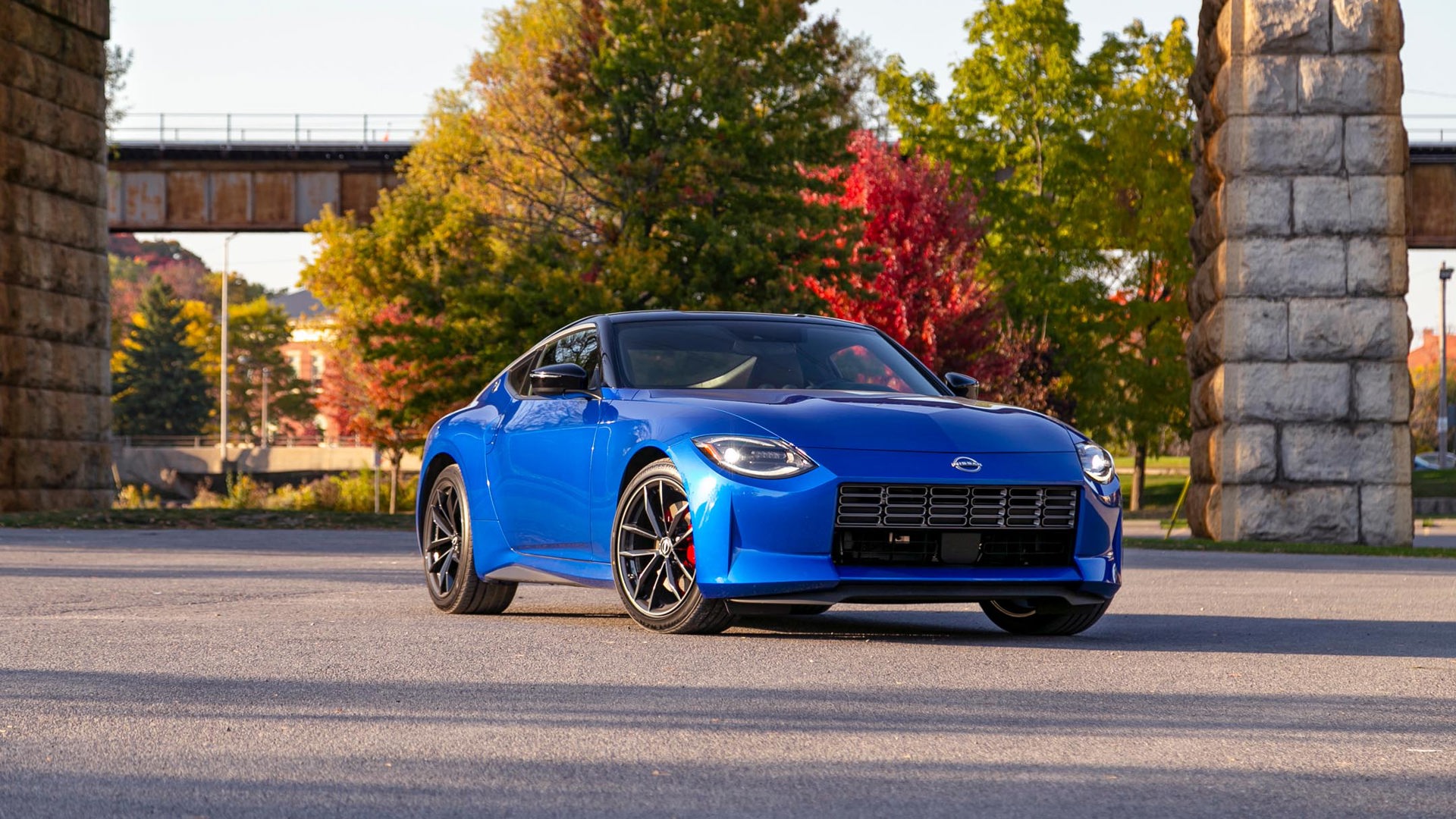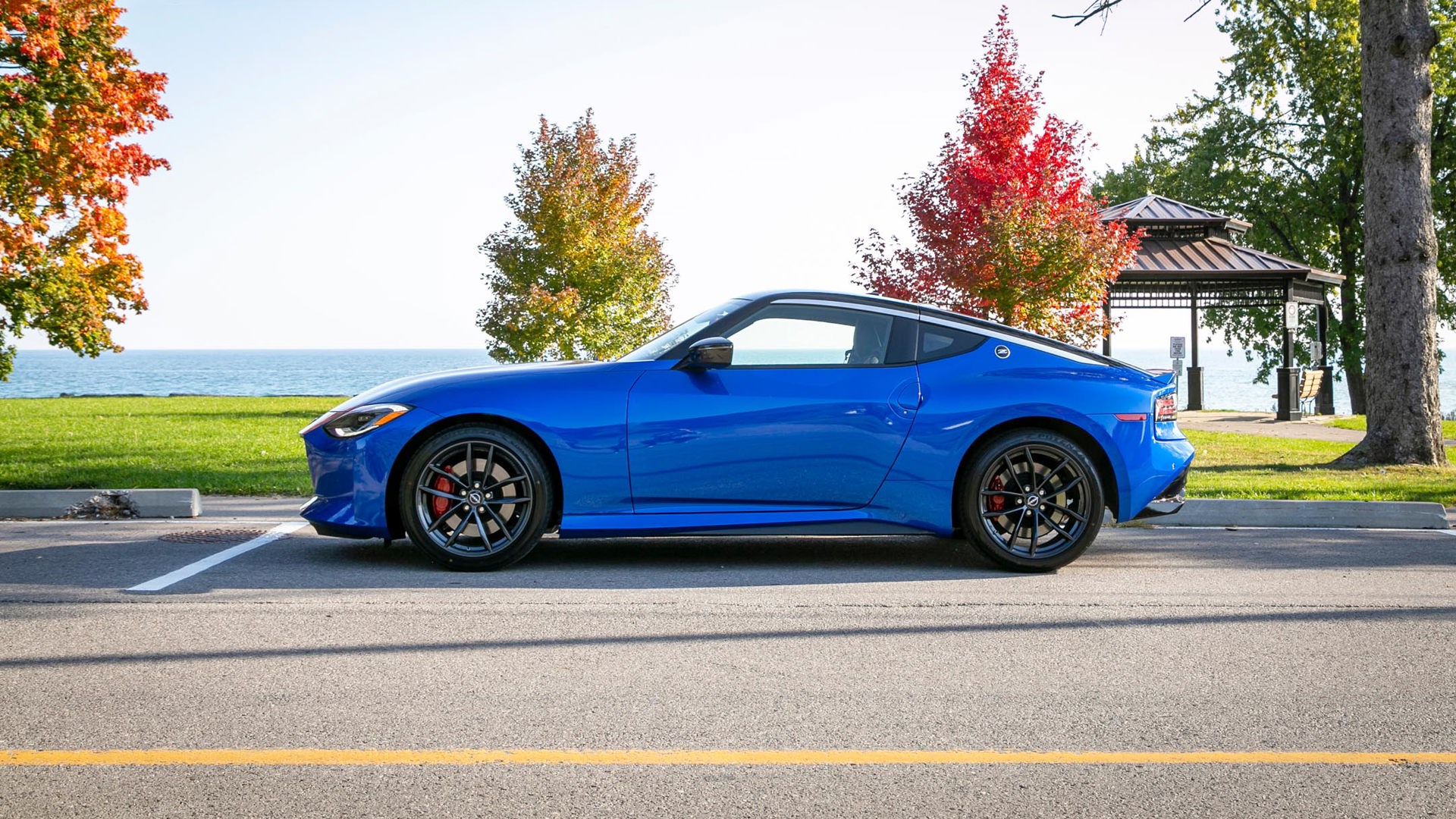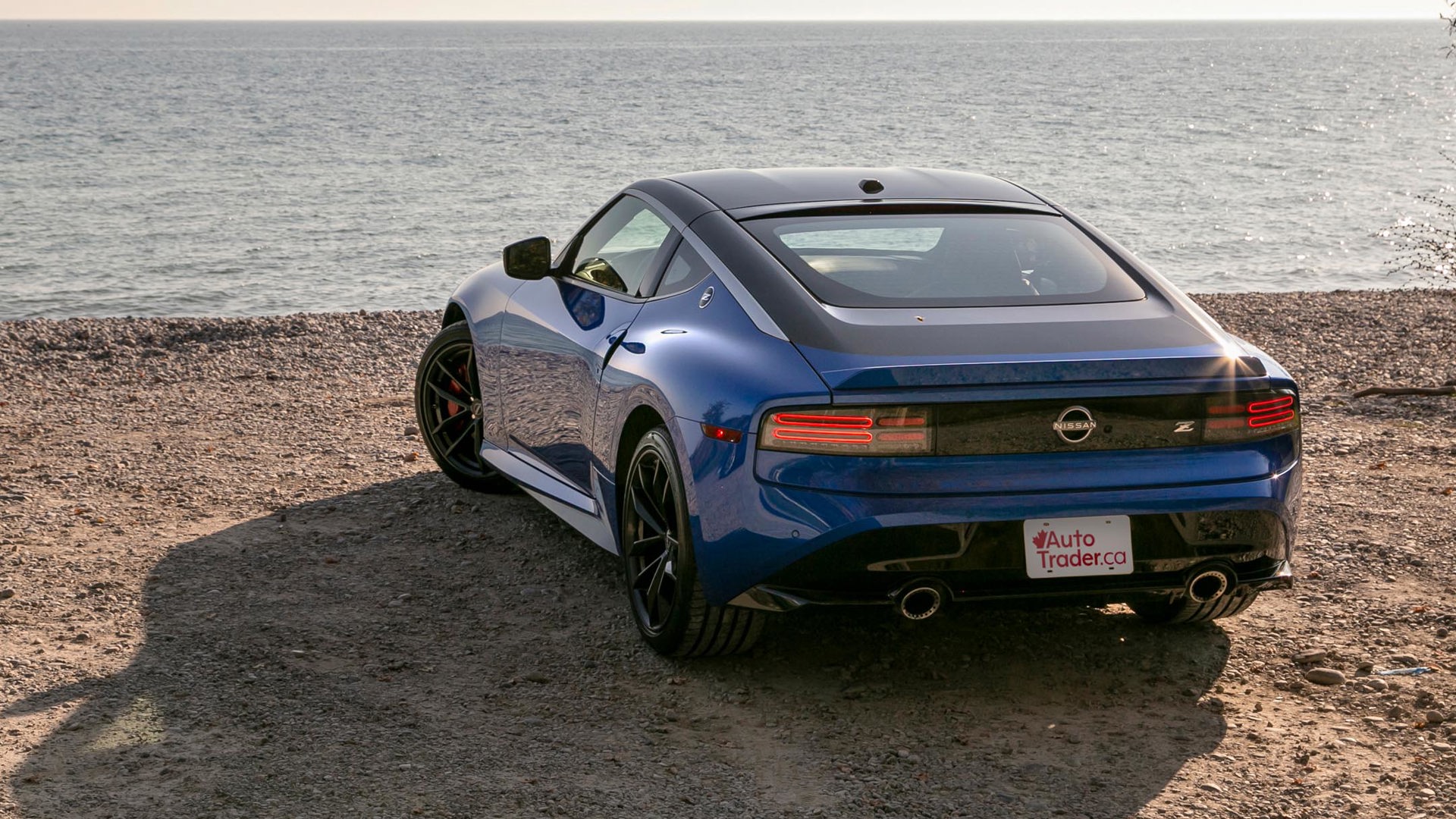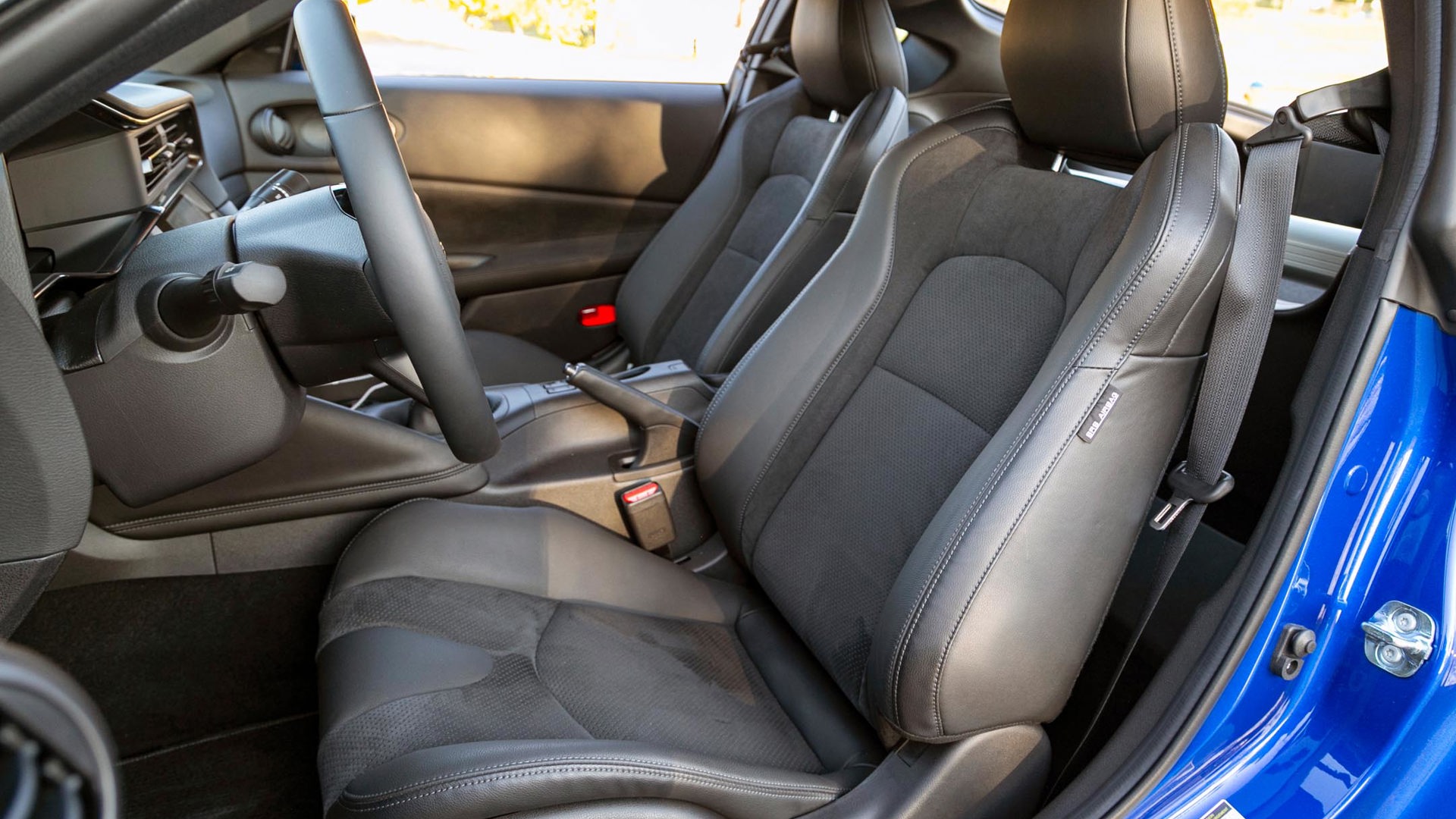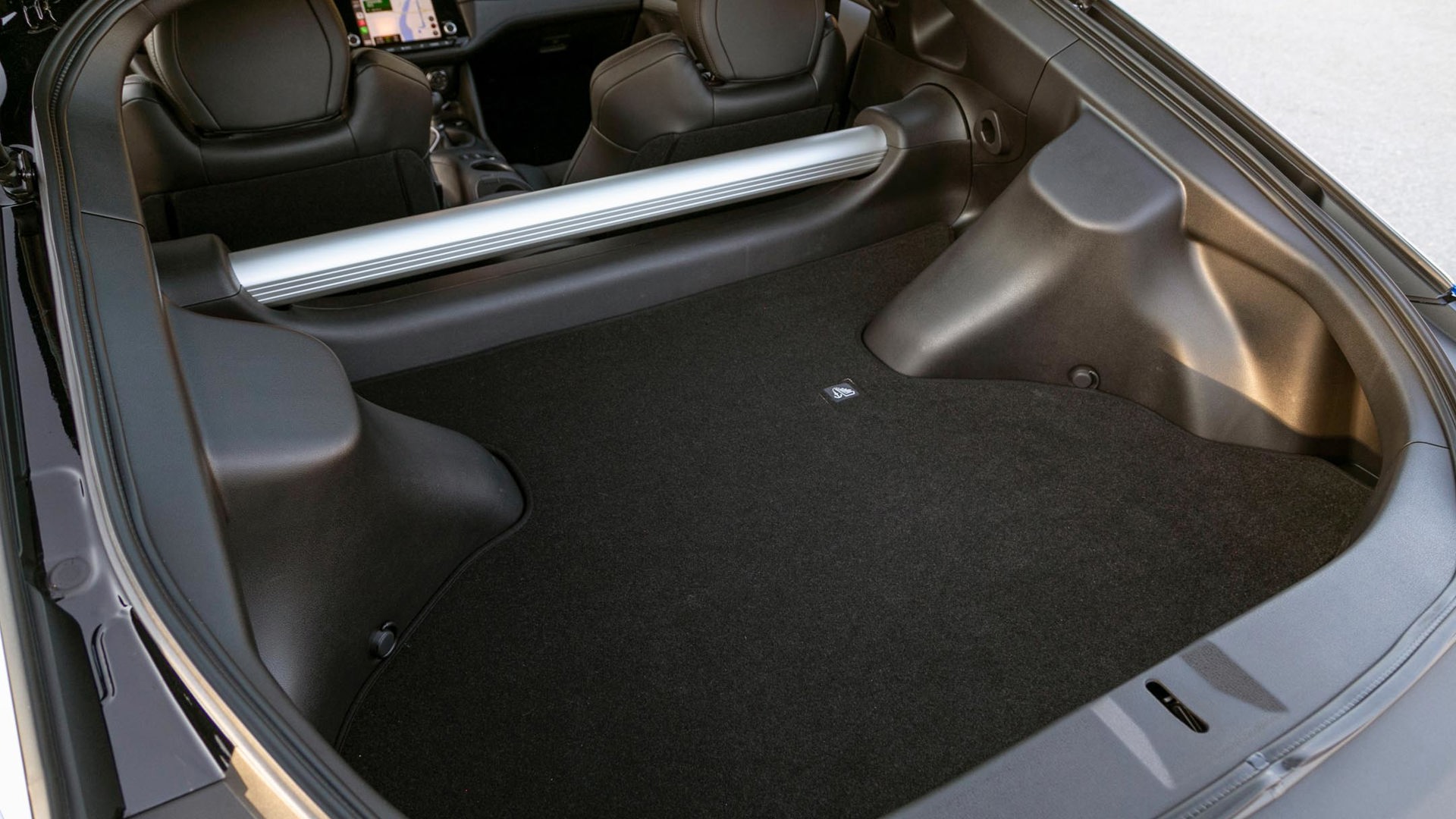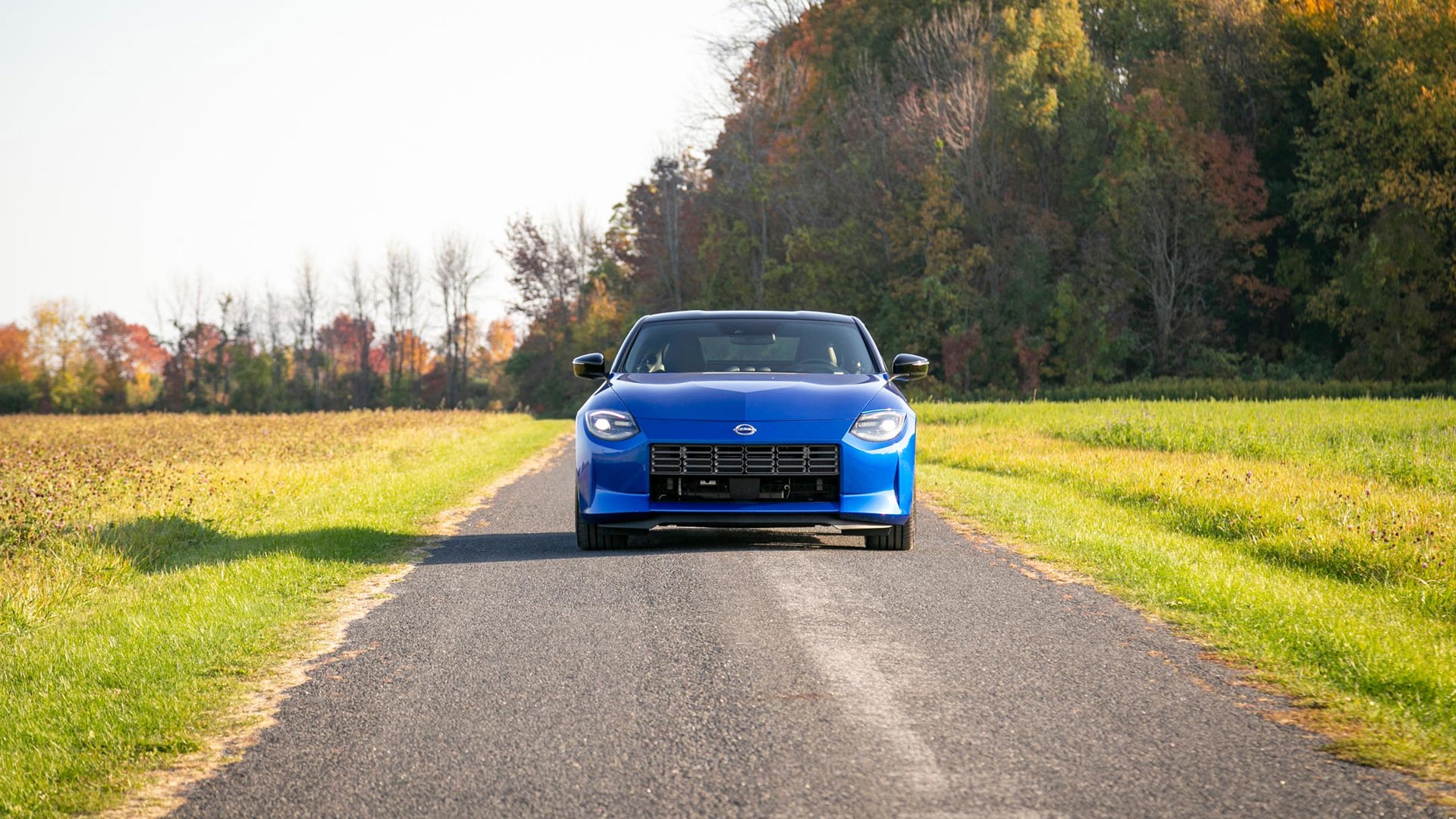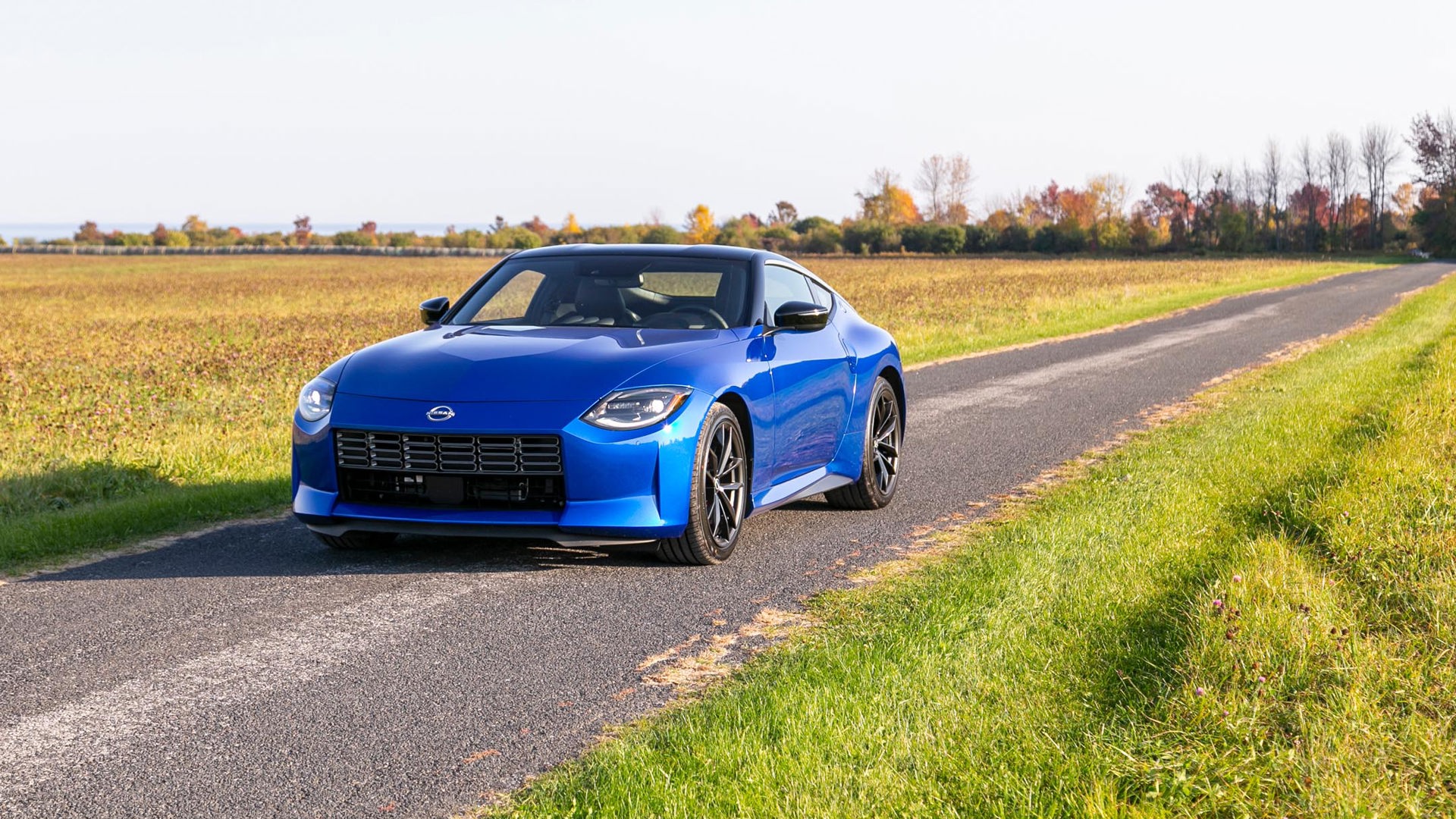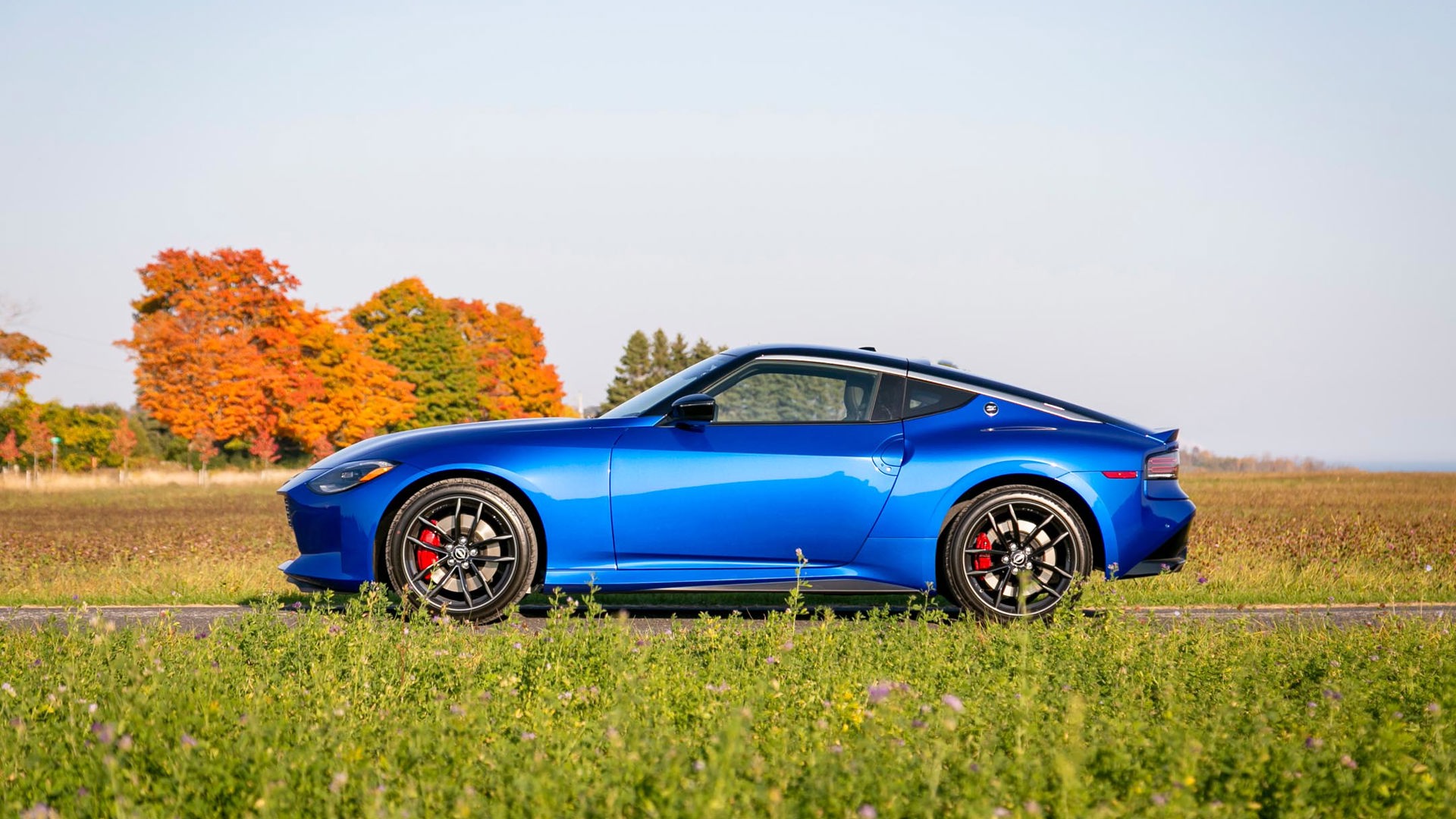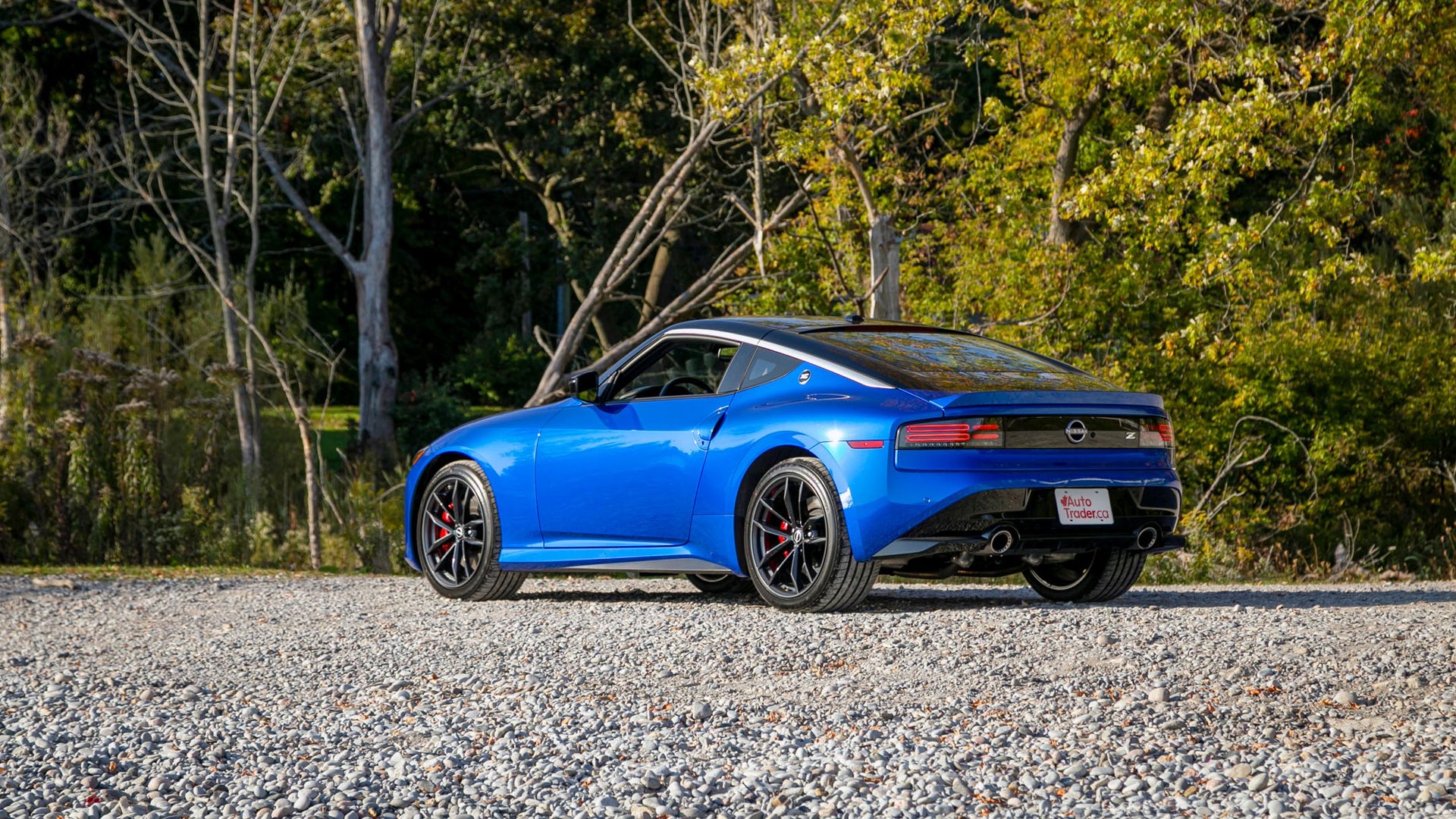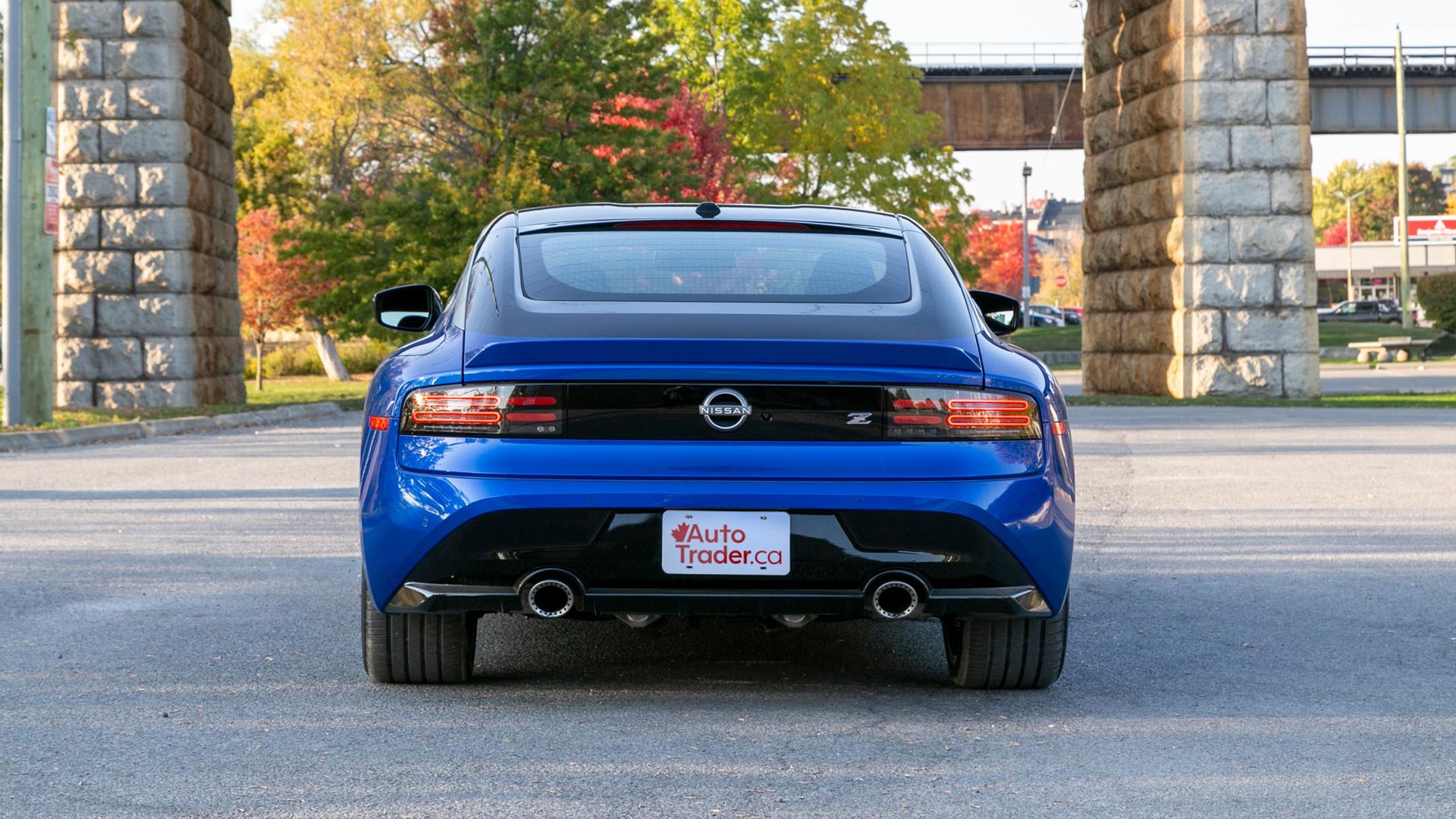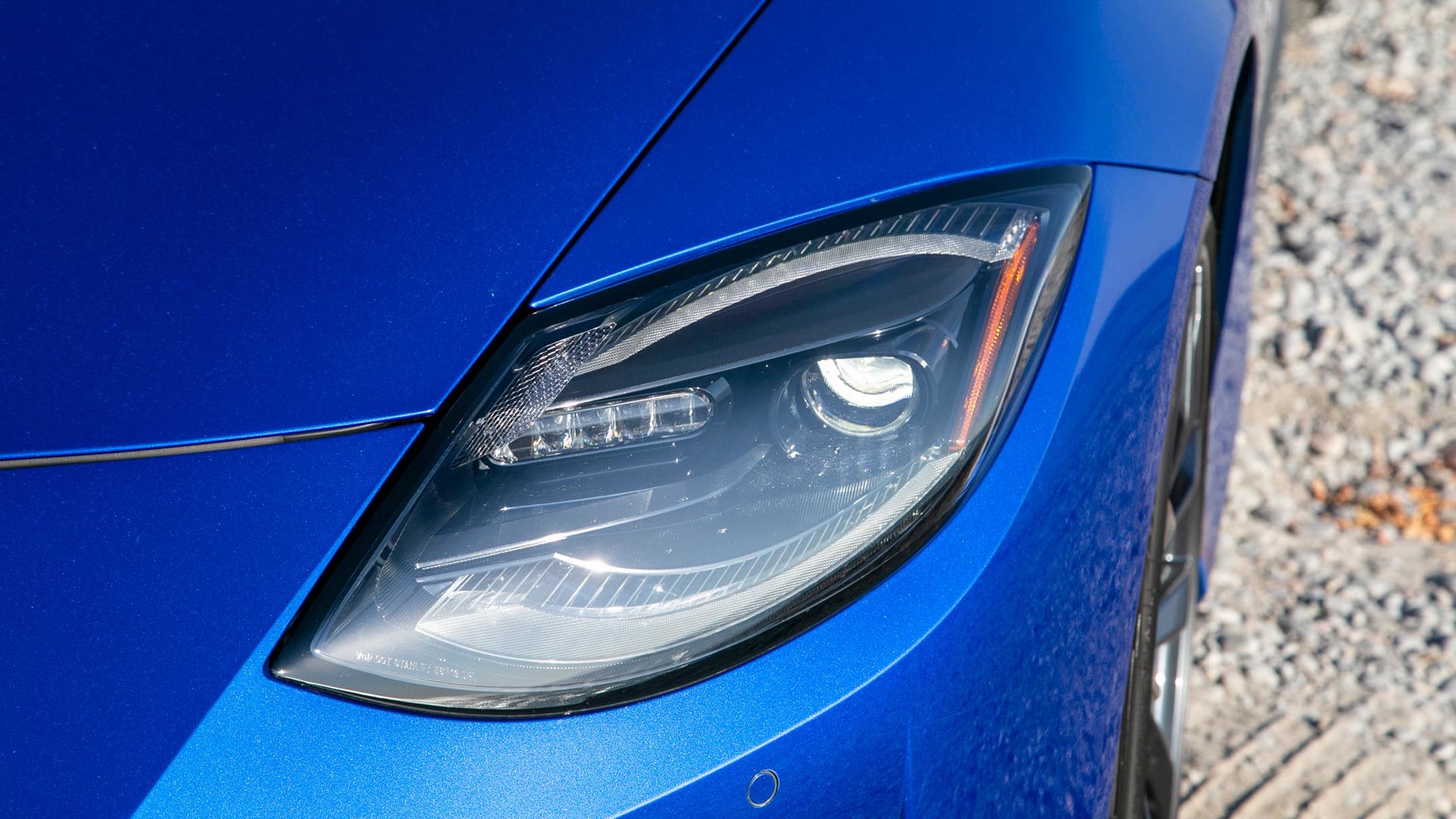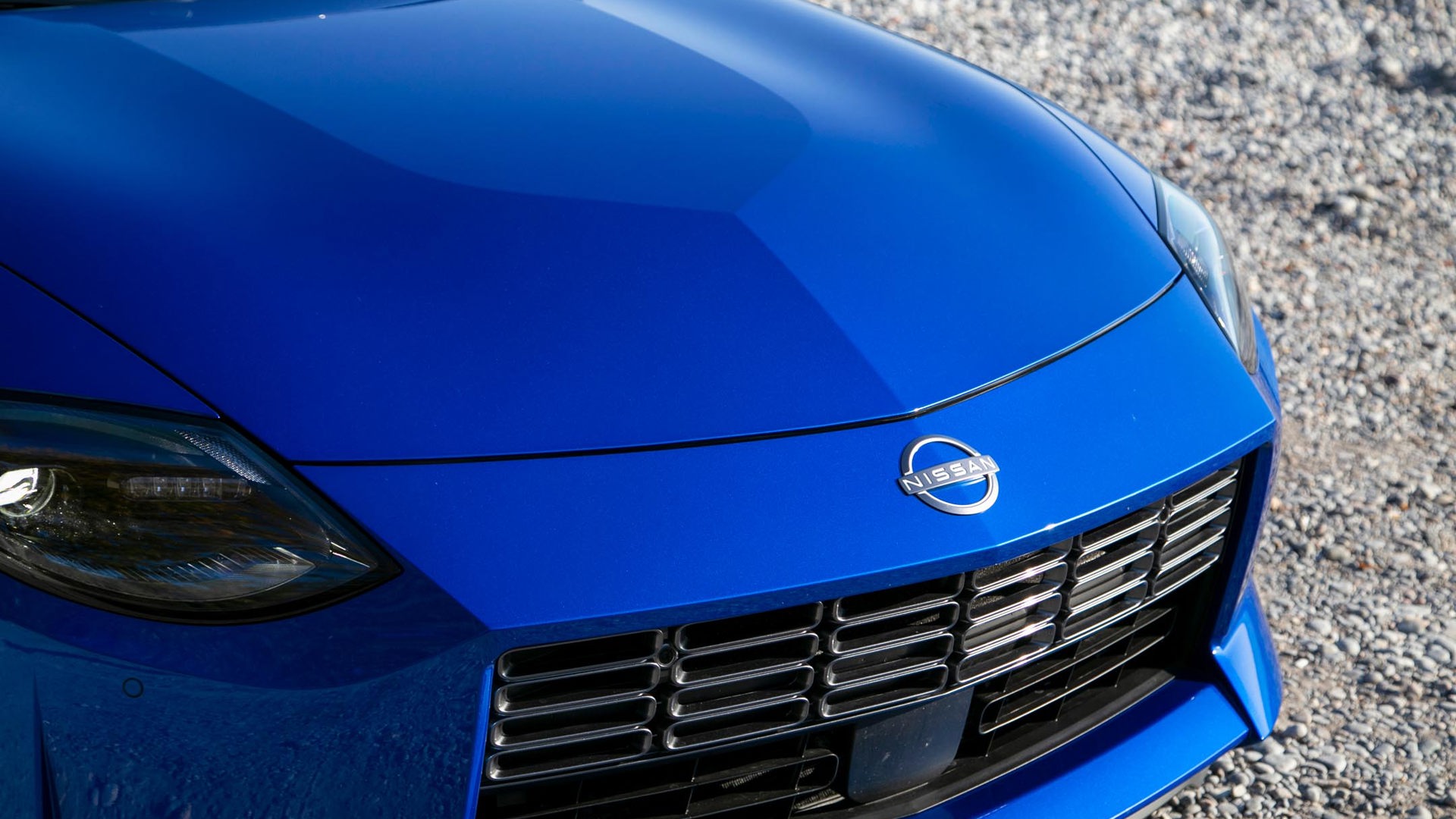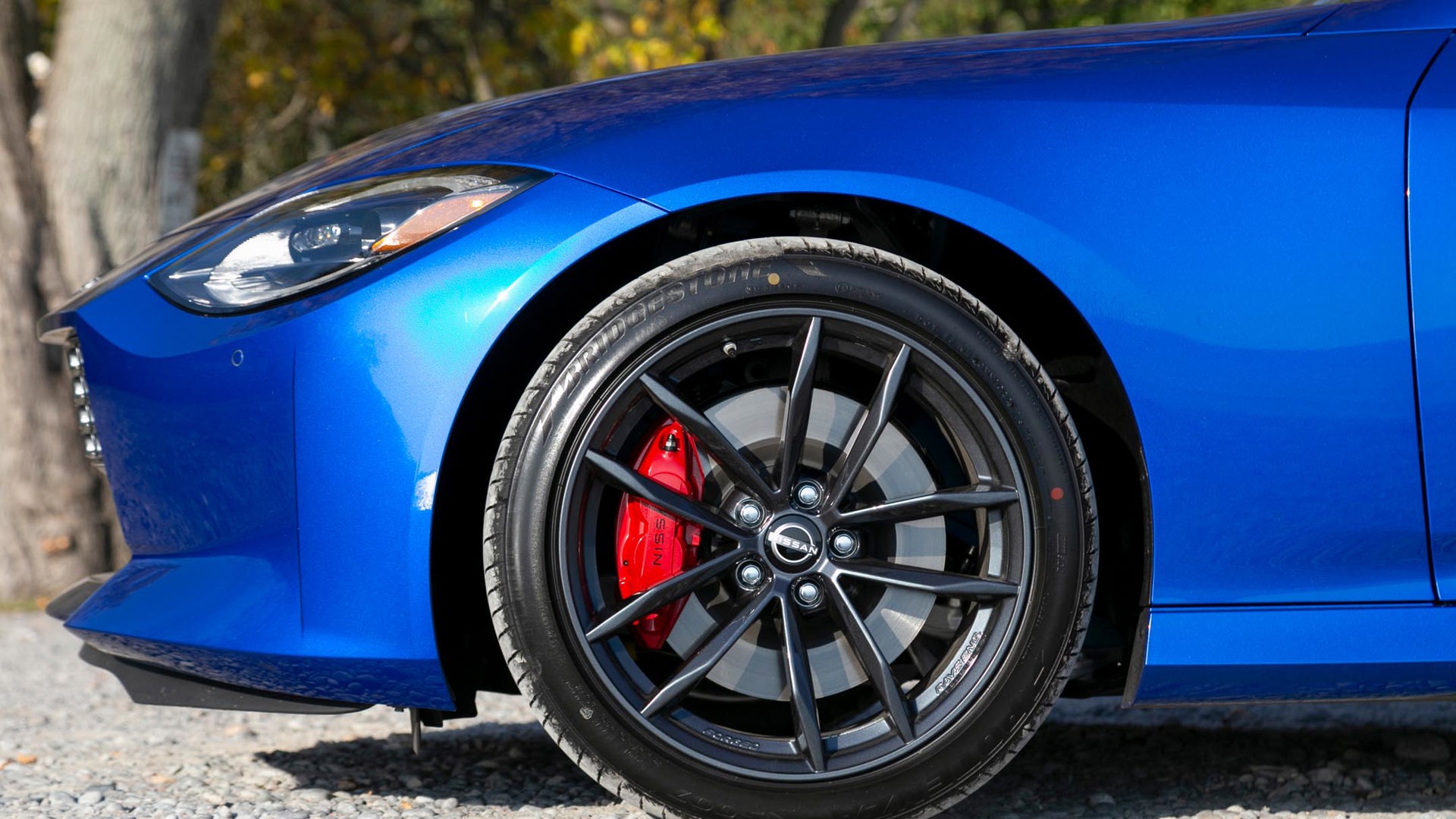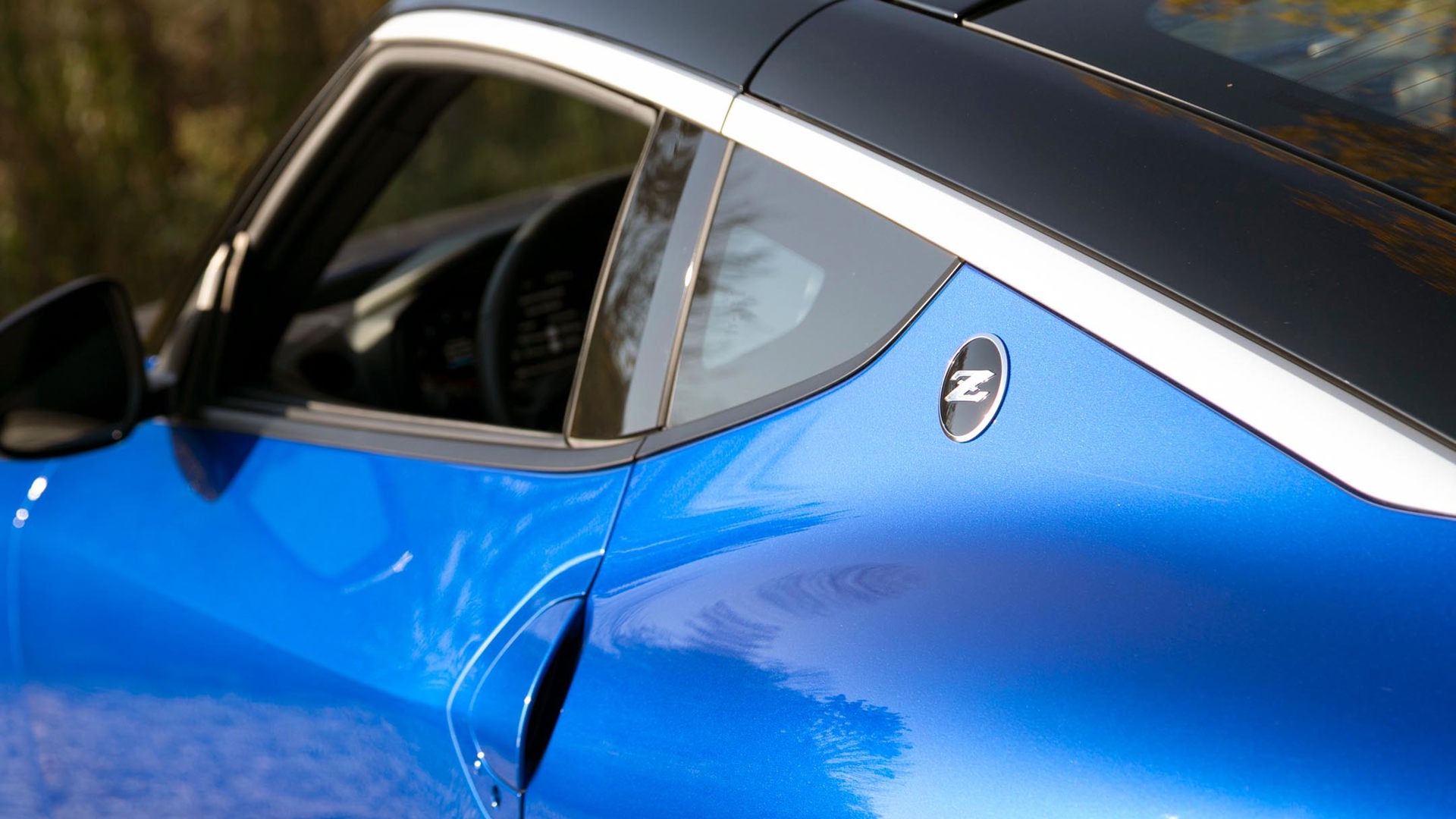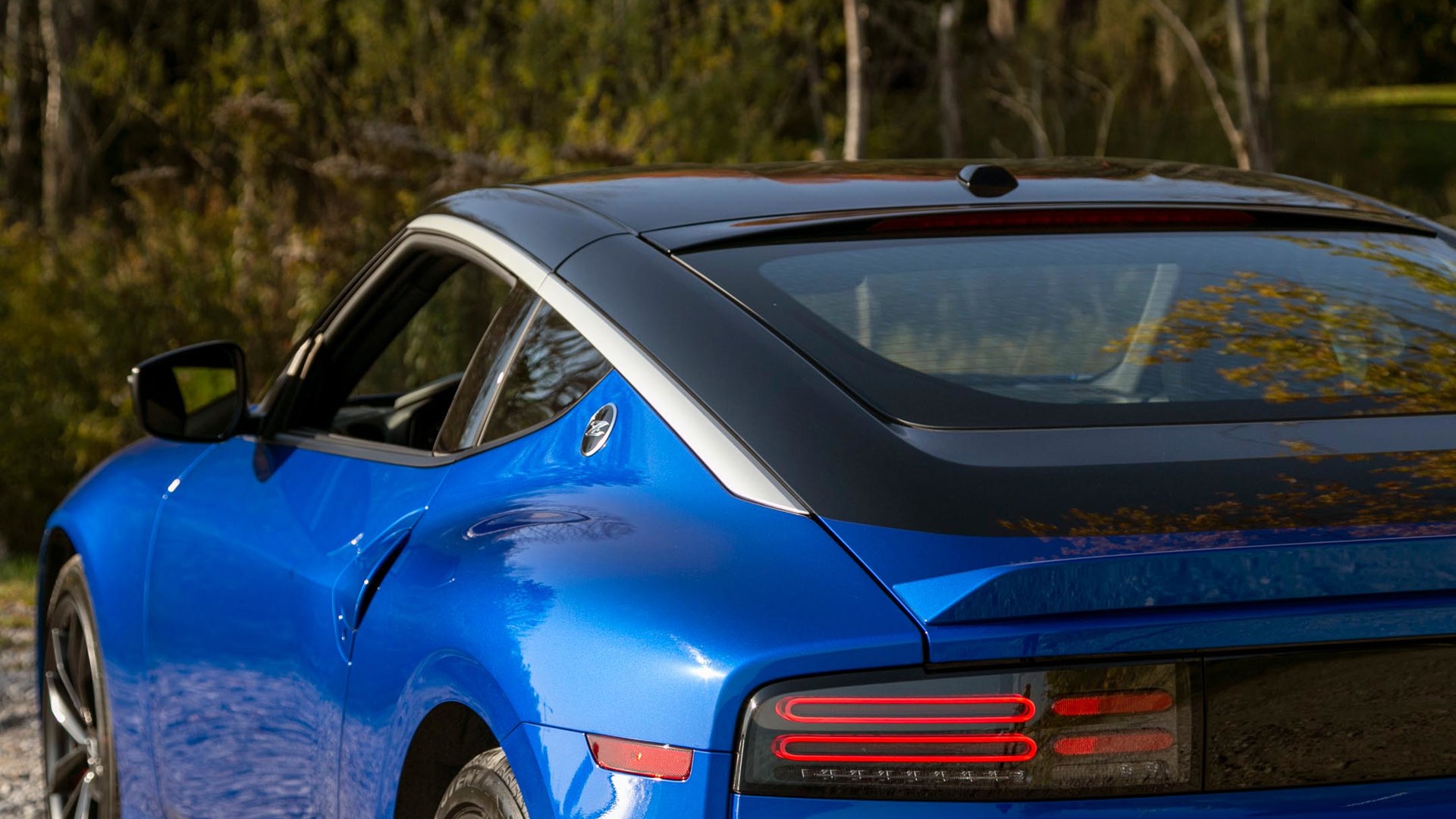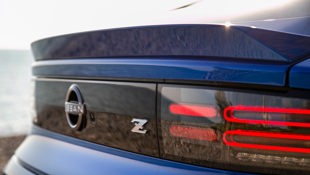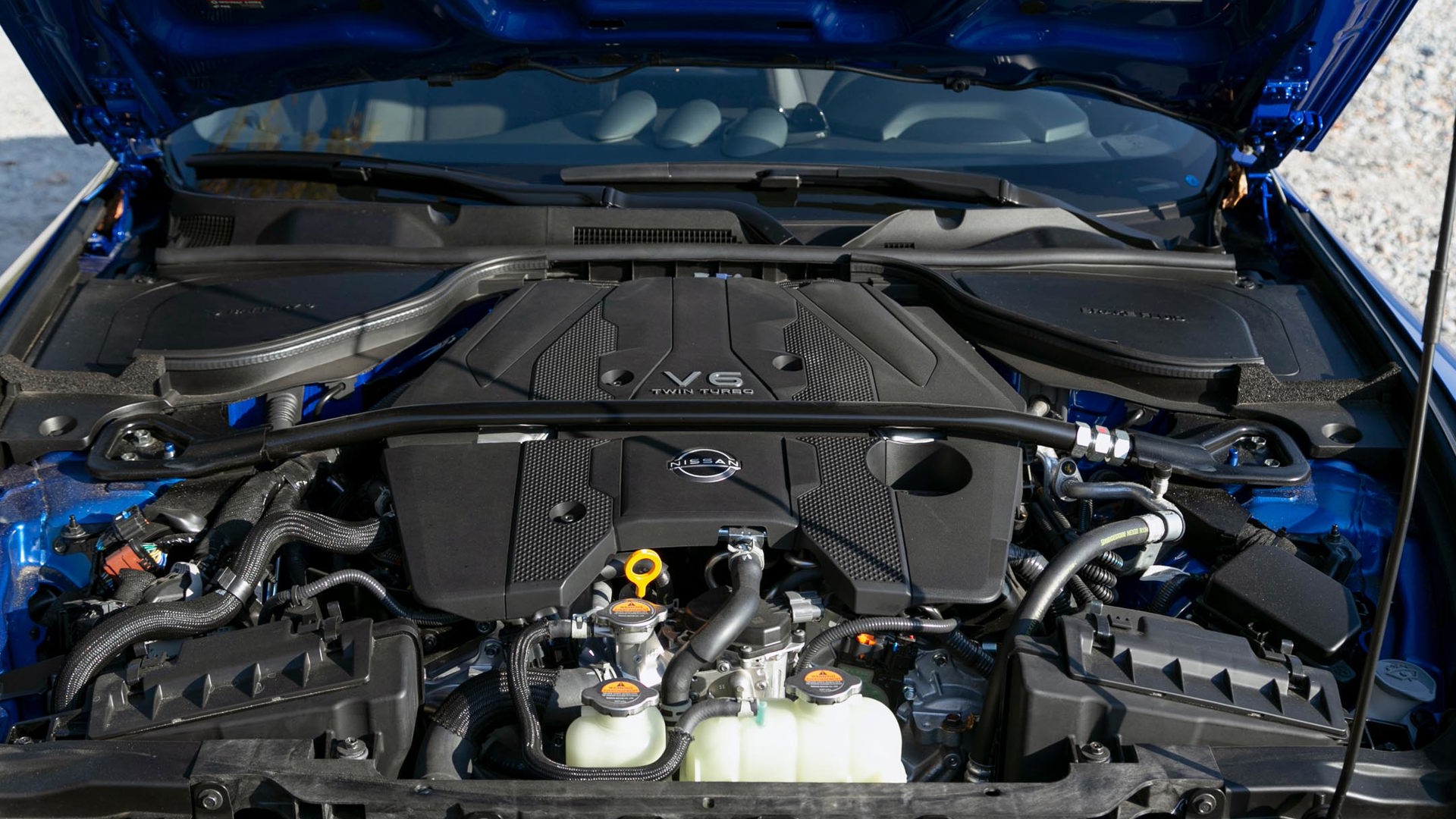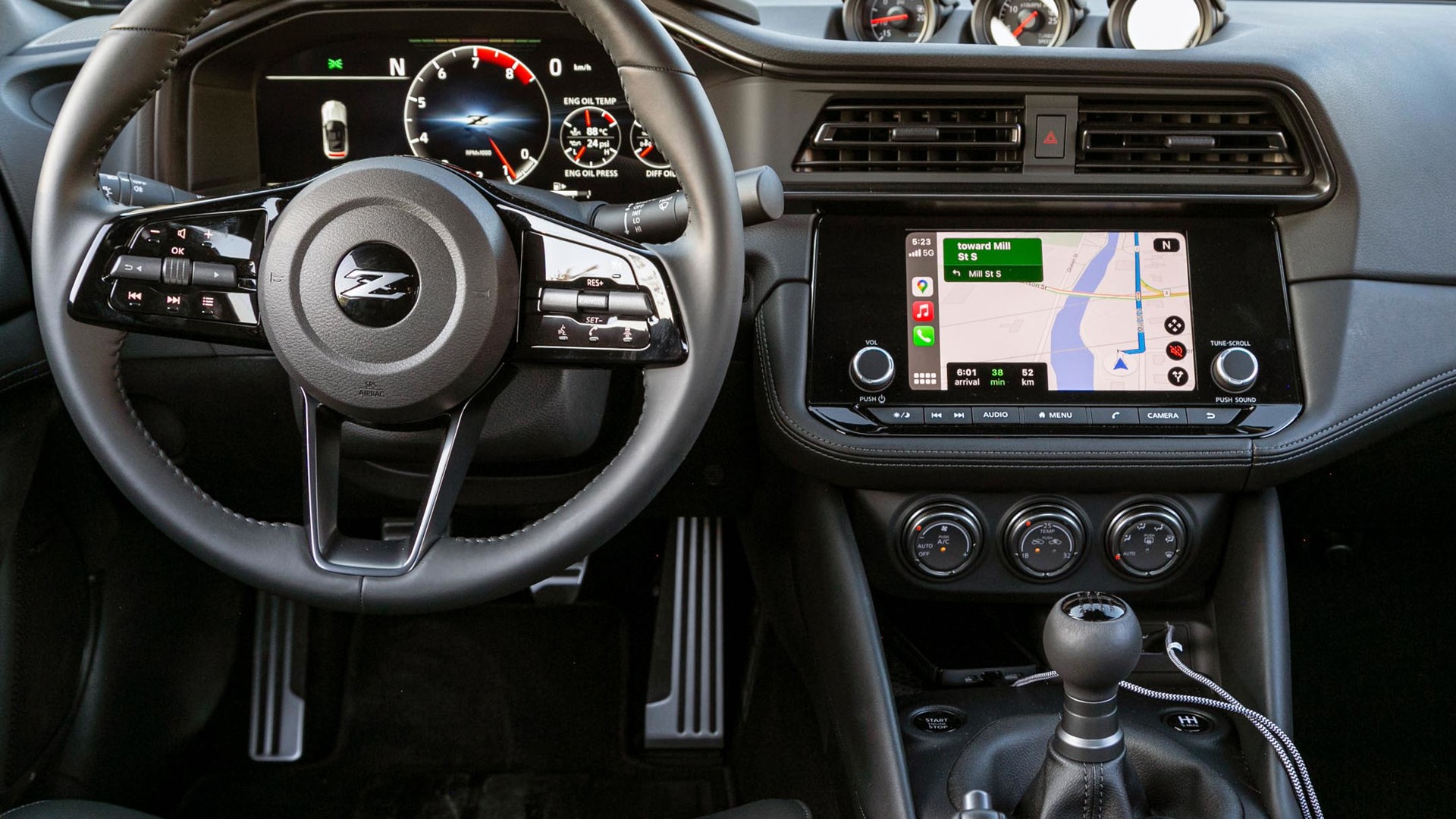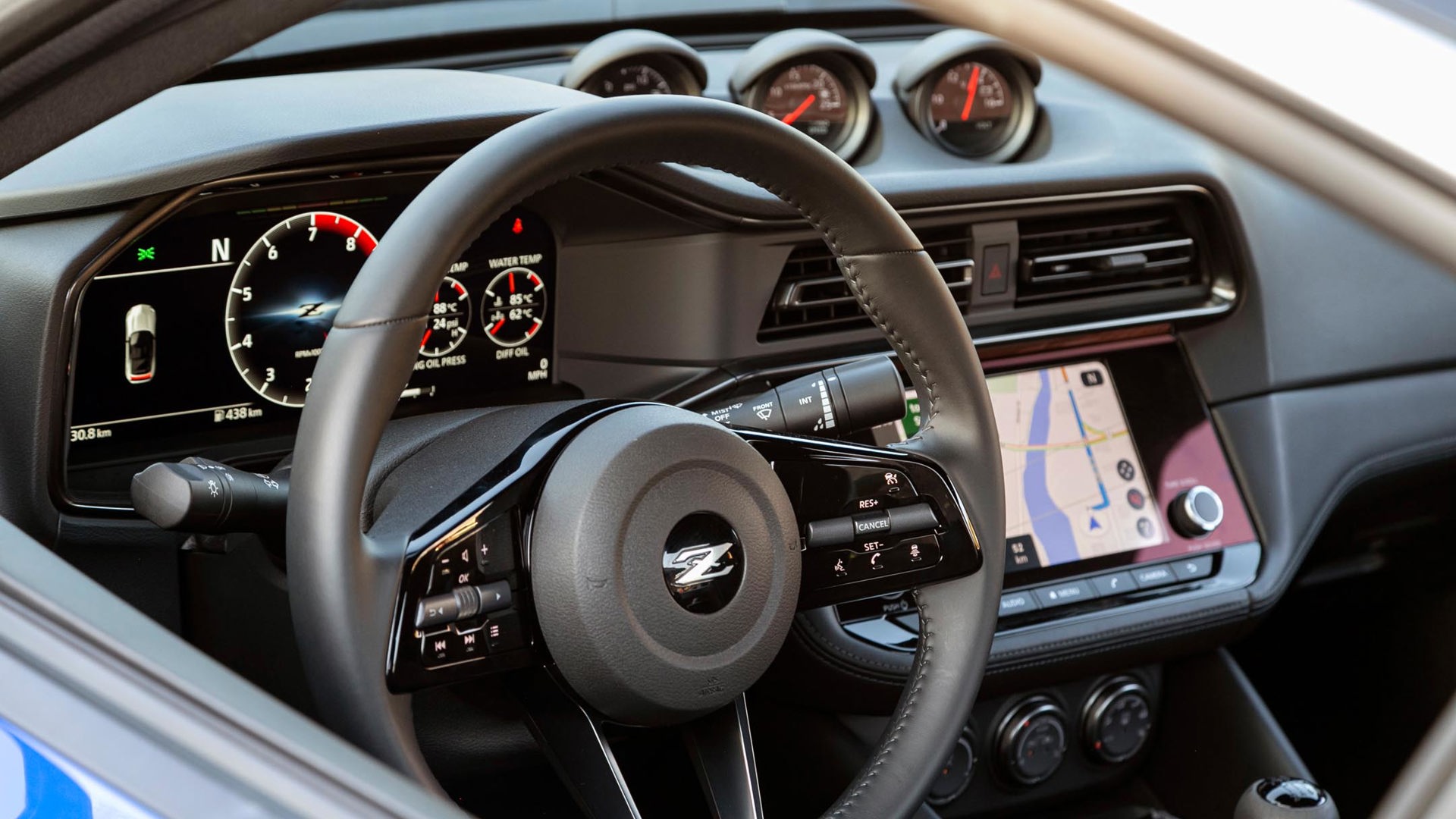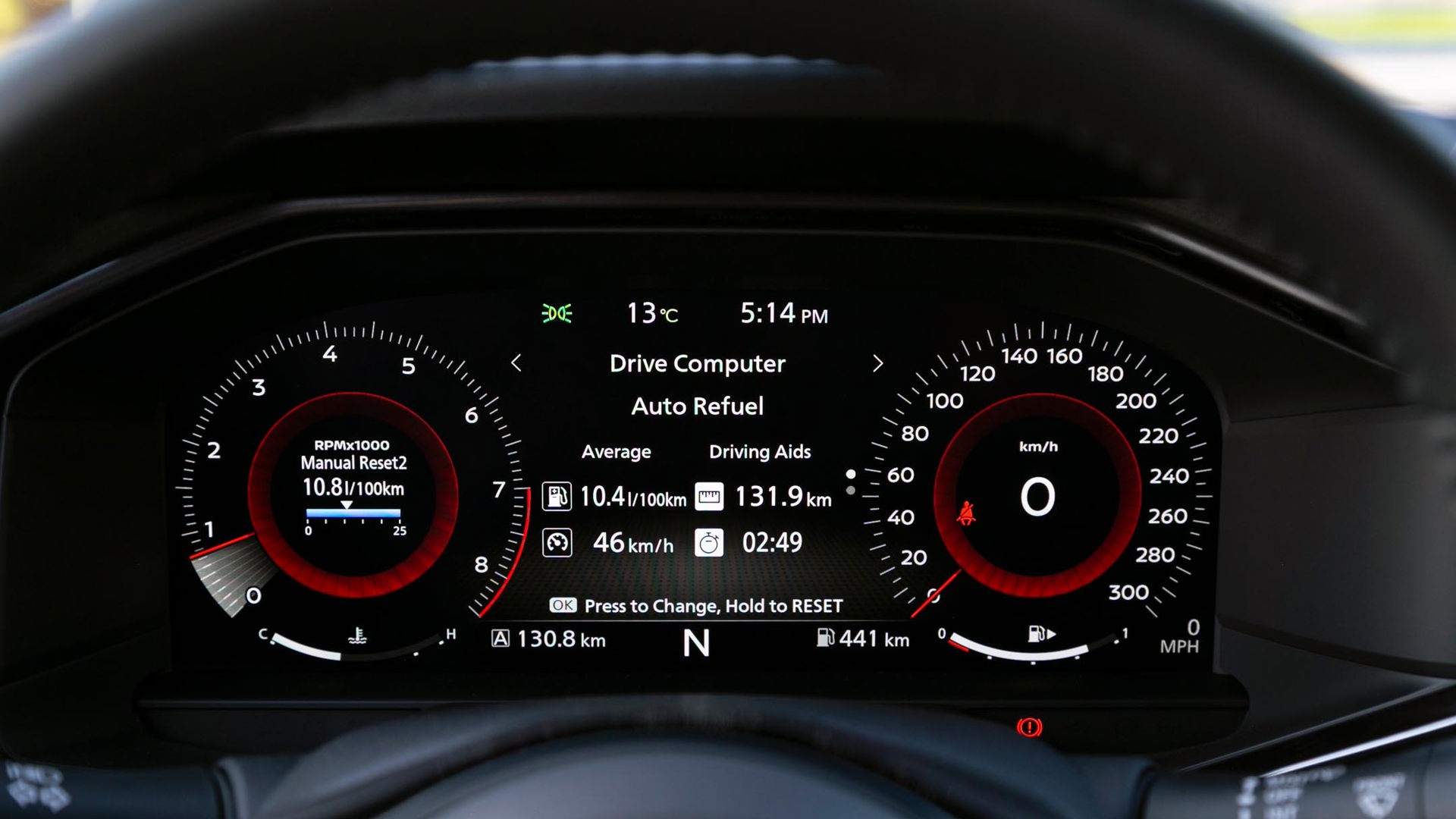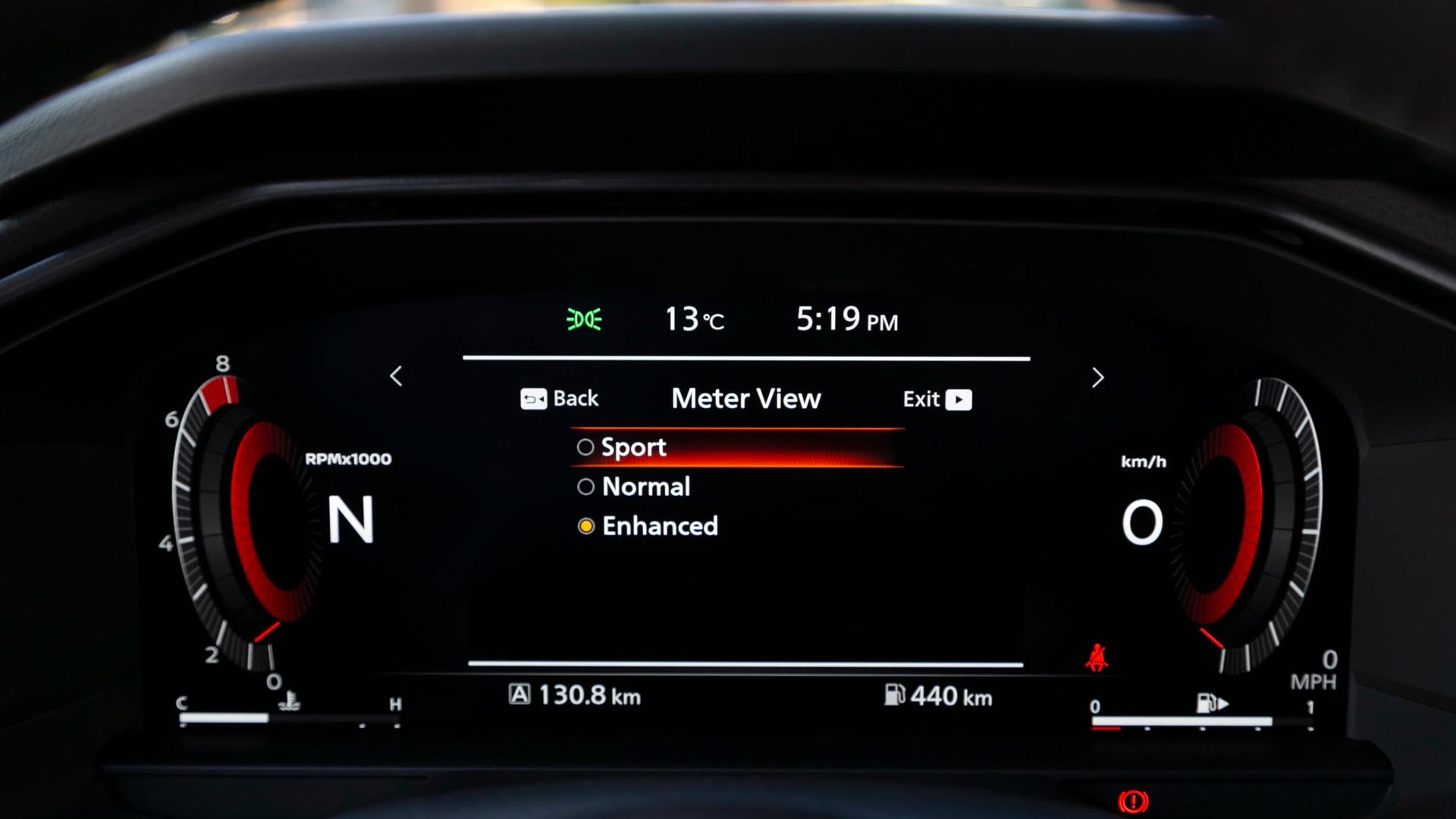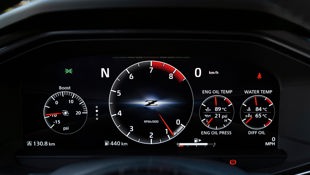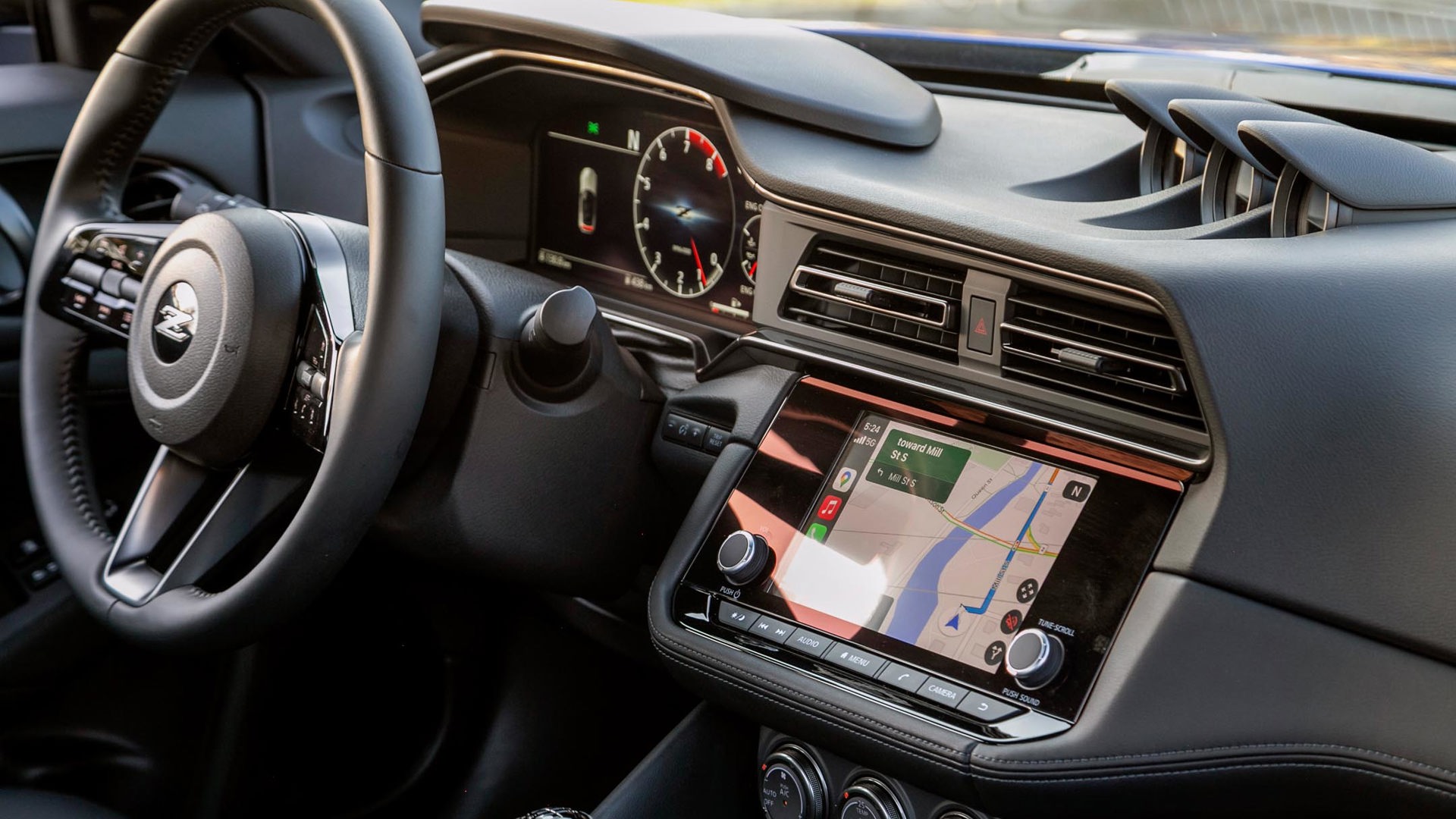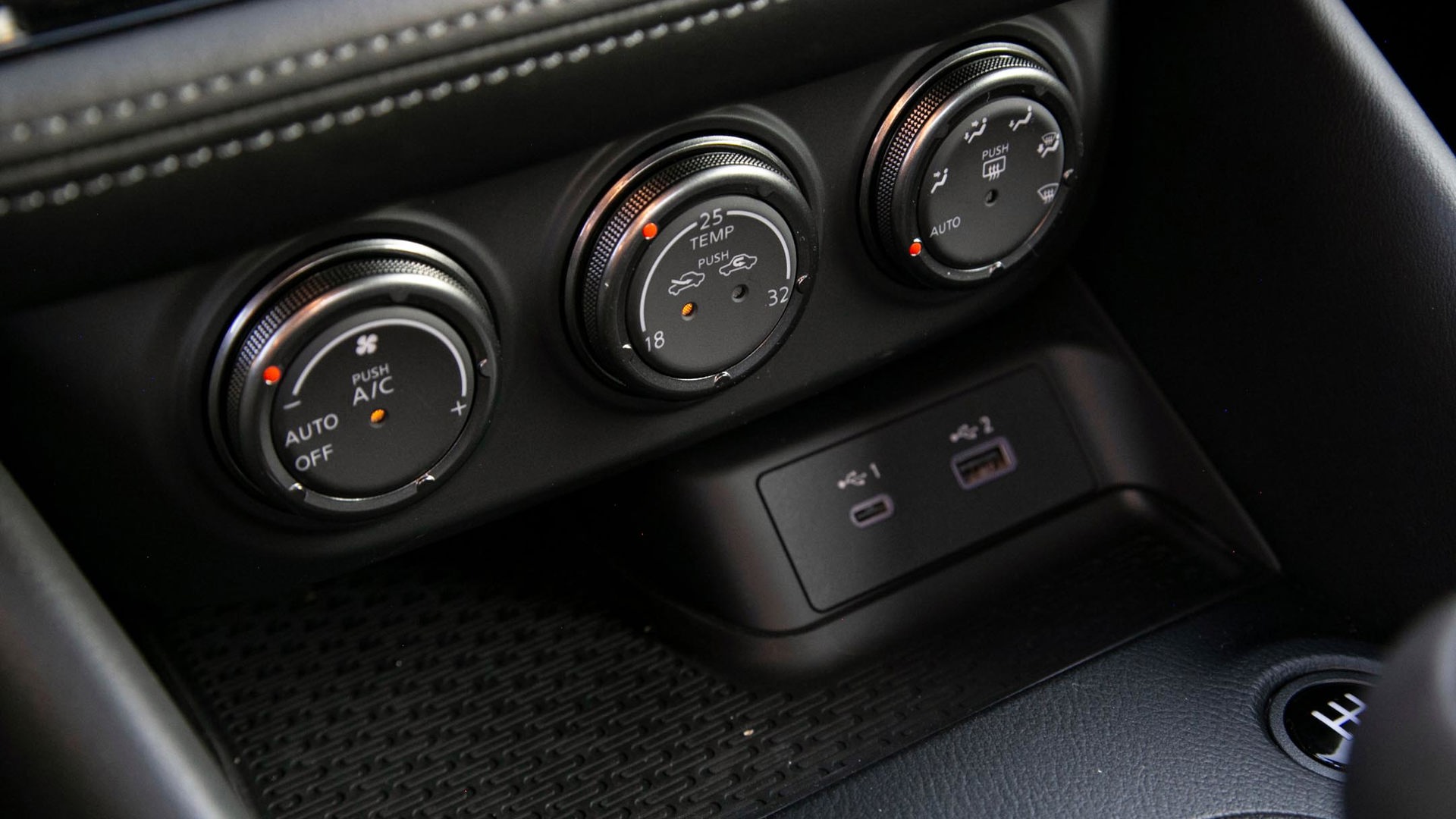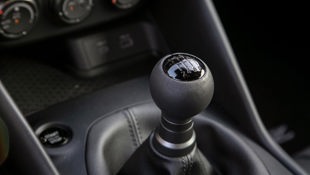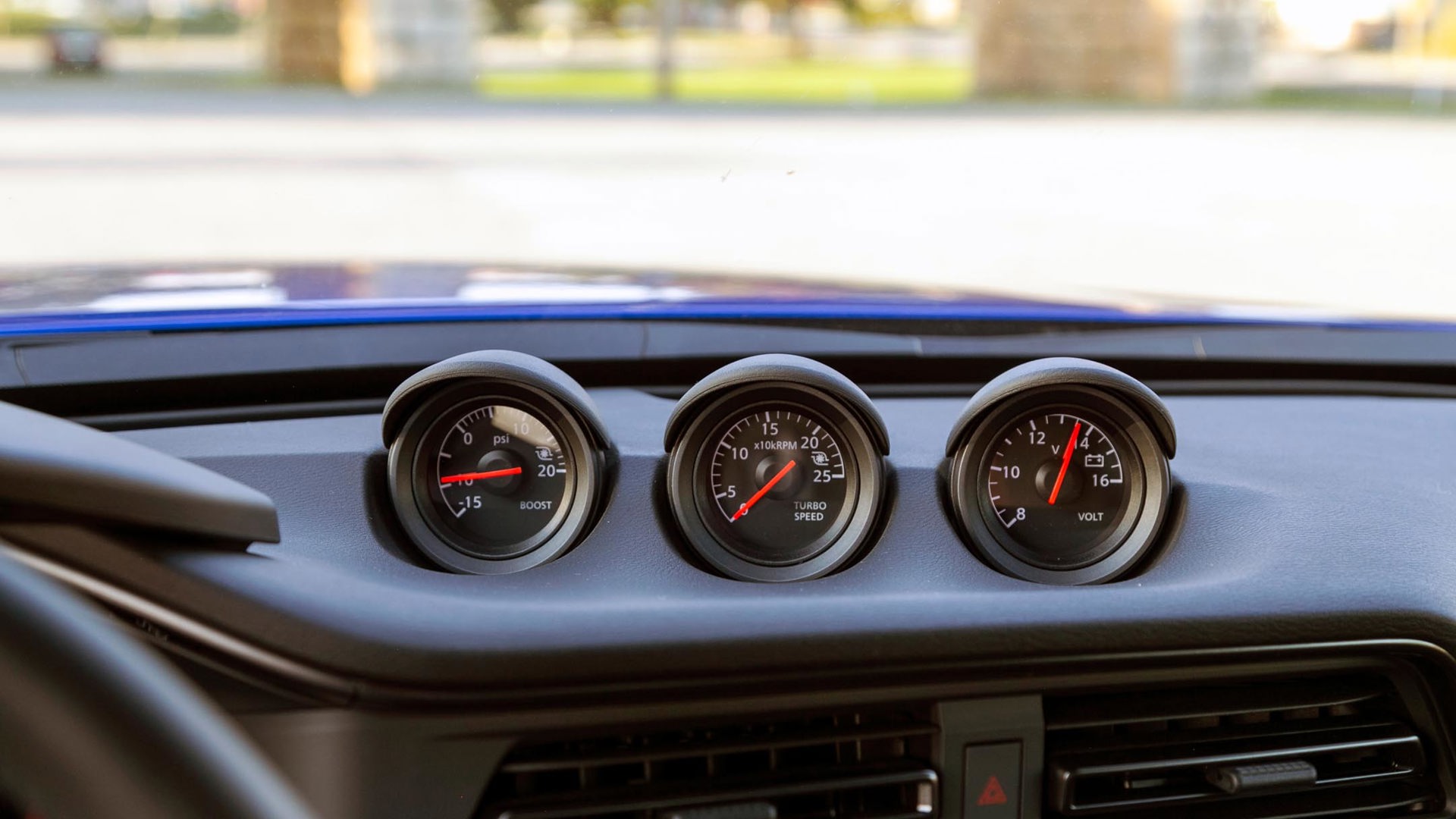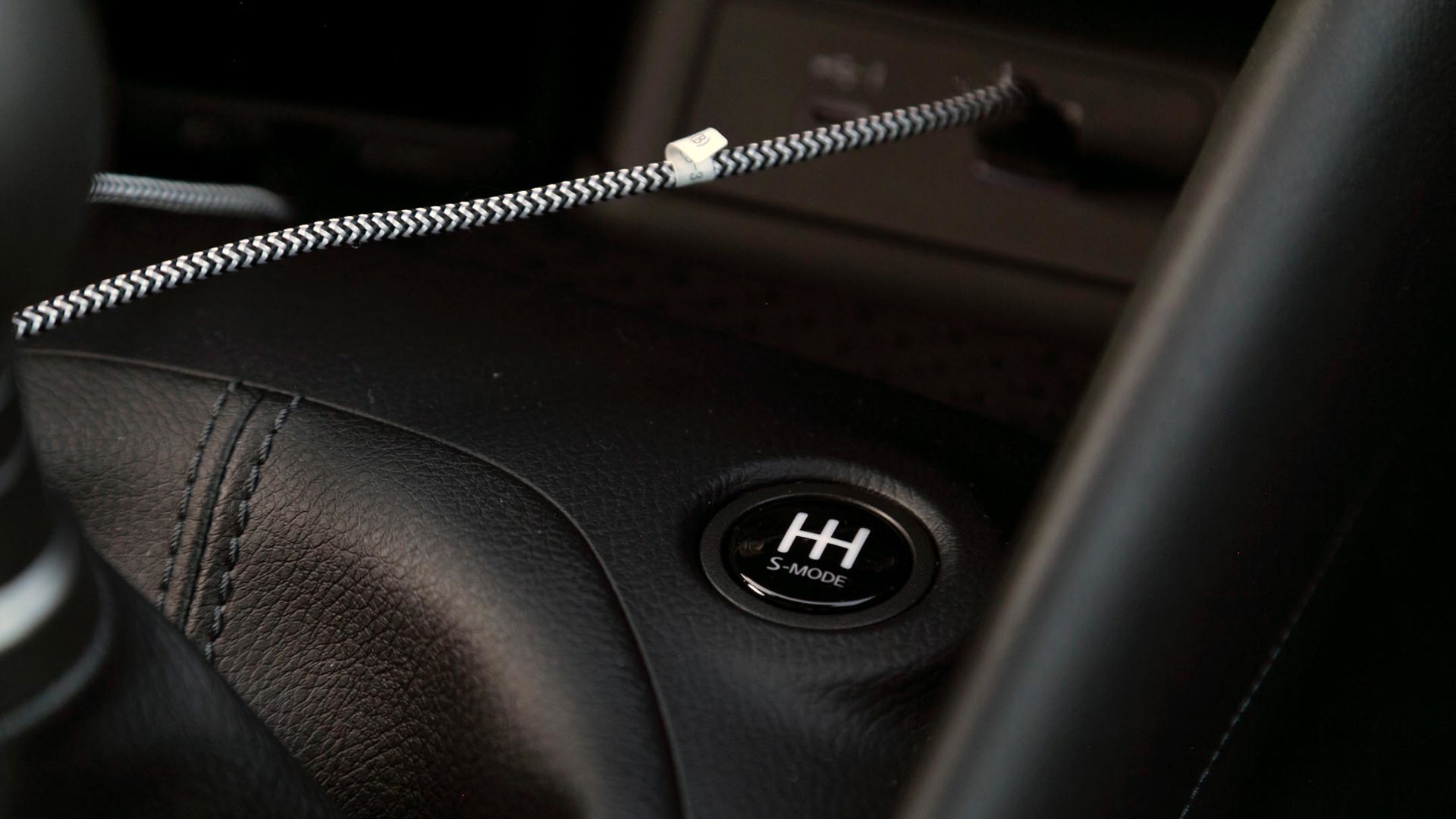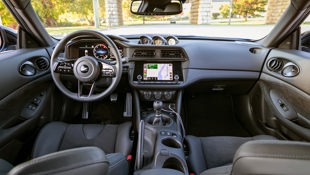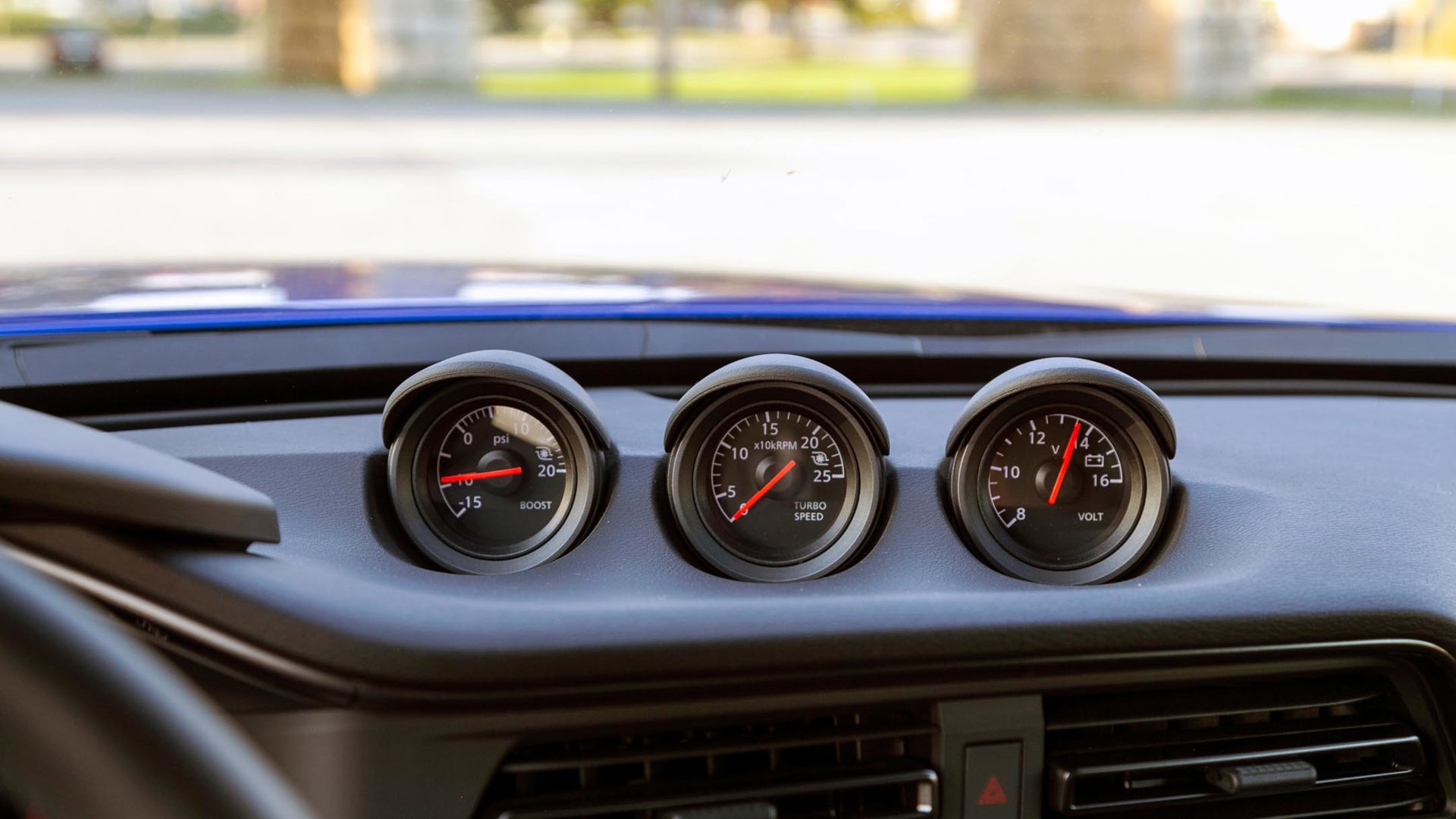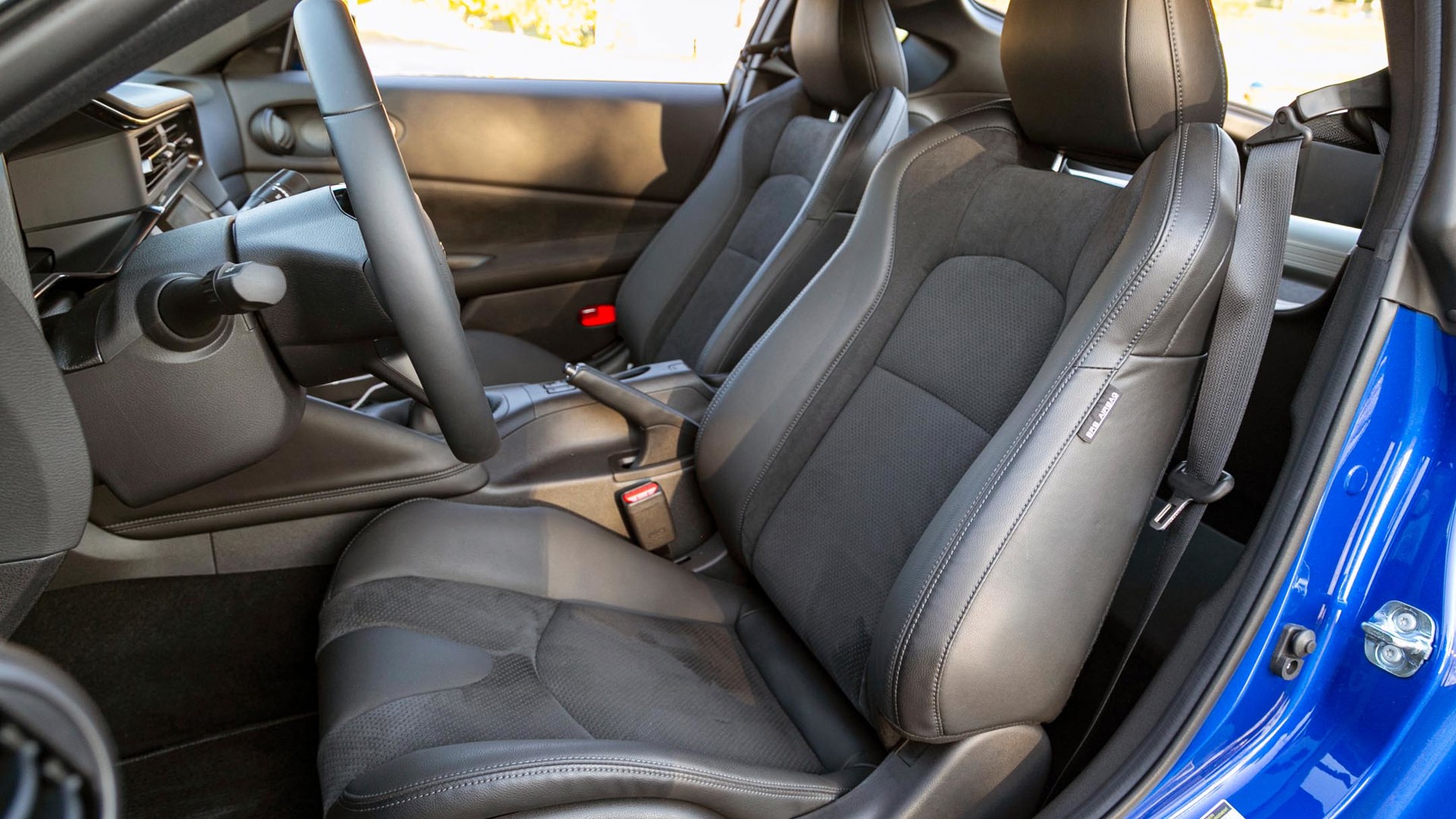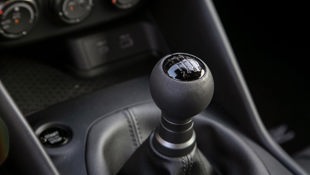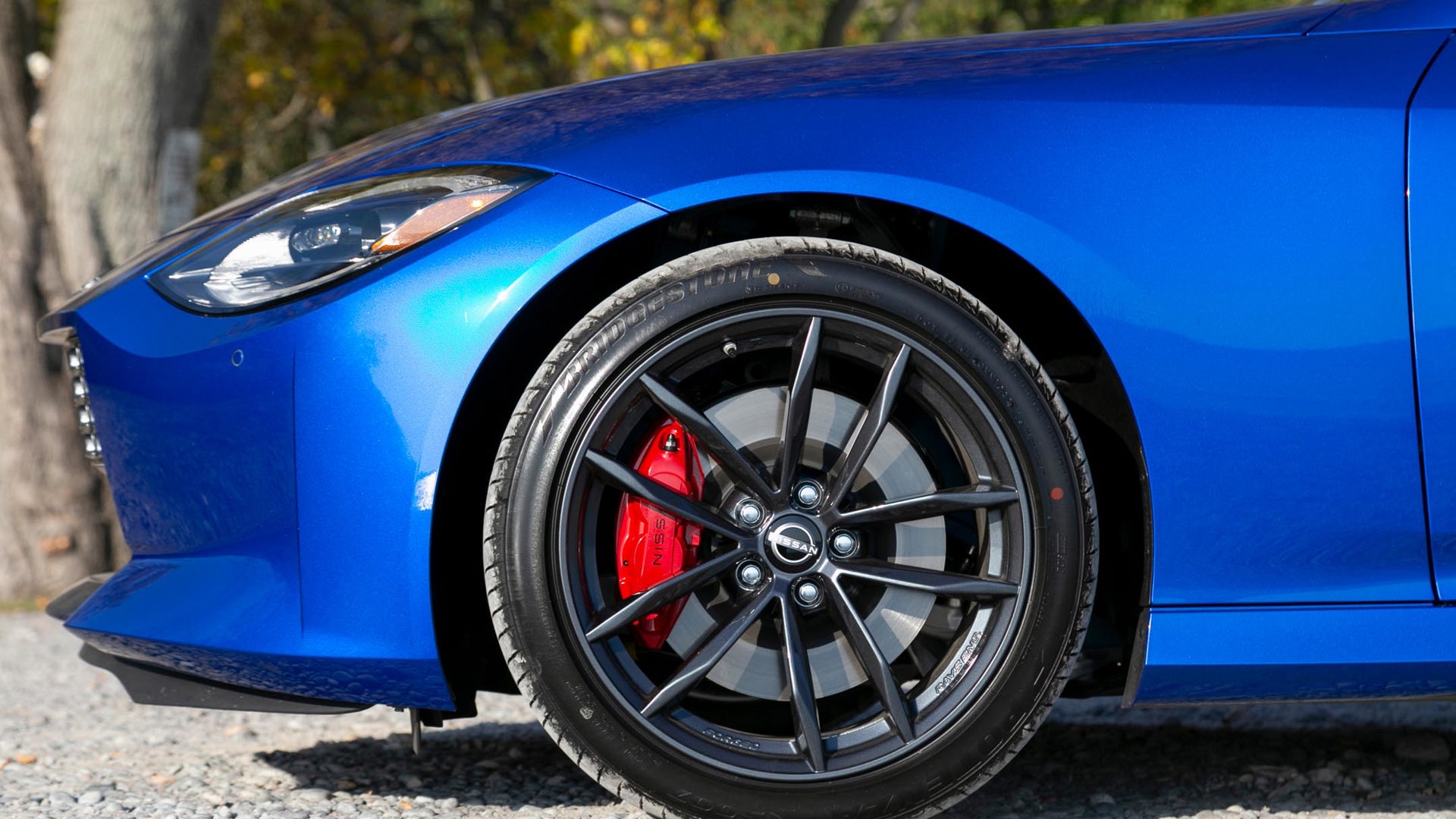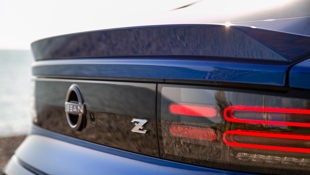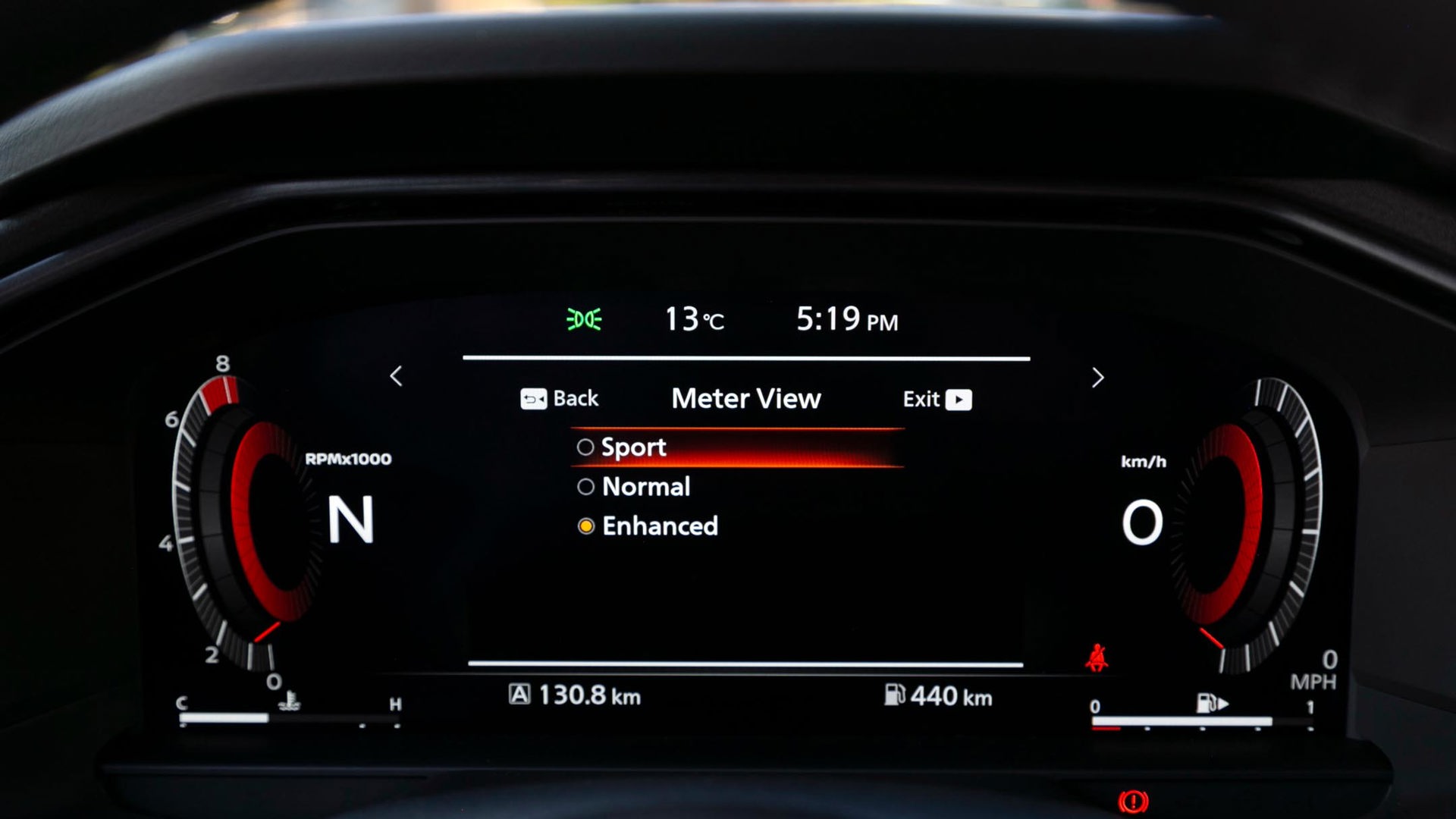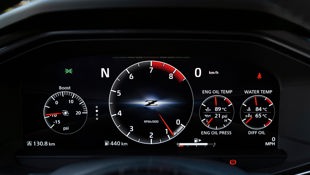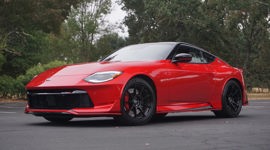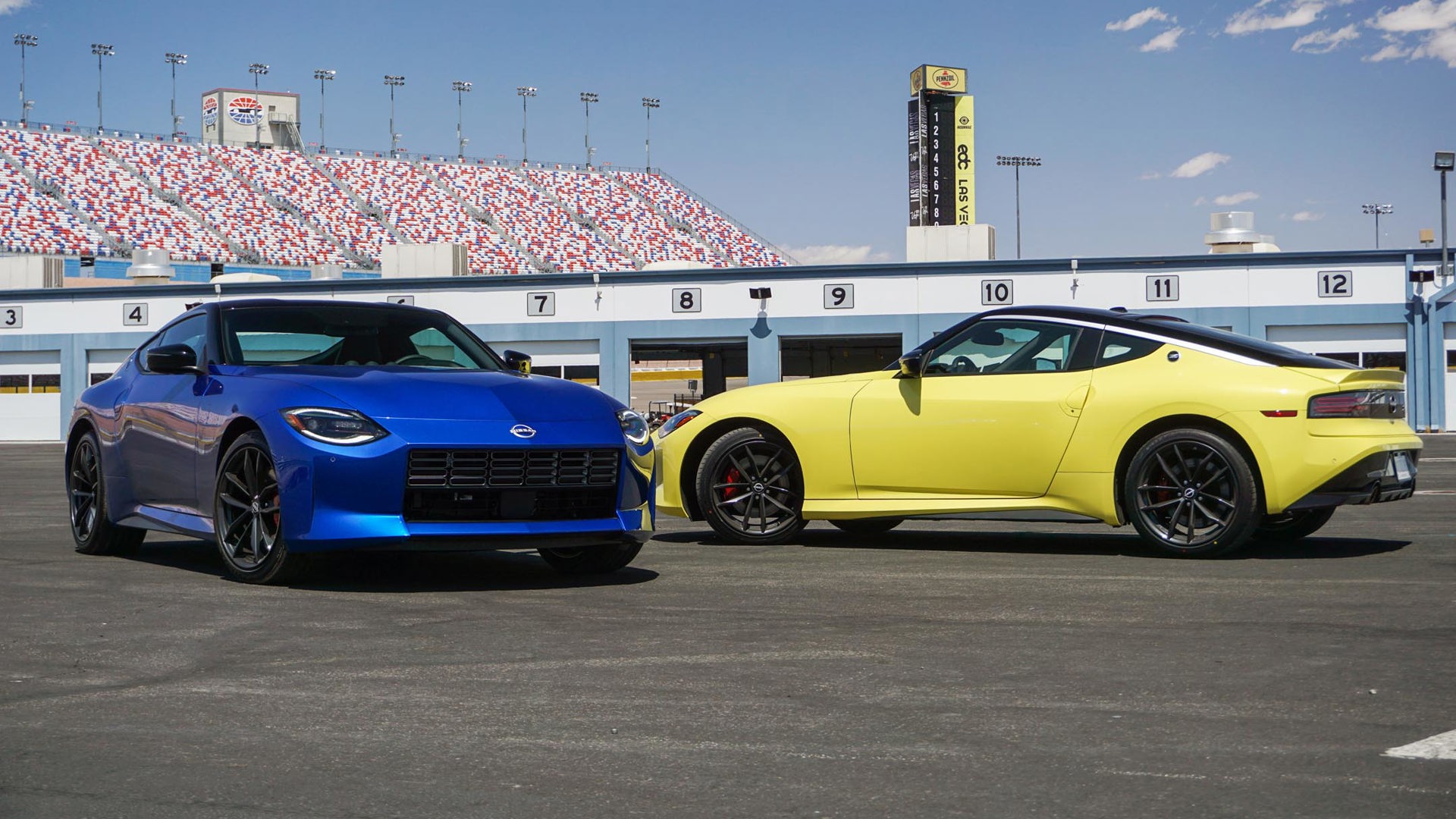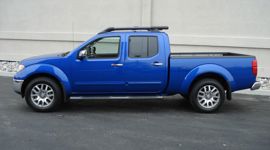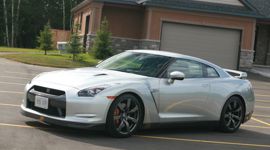 AutoTrader SCORE
AutoTrader SCORE
-
STYLING9/10
-
Safety8/10
-
PRACTICALITY5/10
-
USER-FRIENDLINESS7/10
-
FEATURES7/10
-
POWER8/10
-
COMFORT7/10
-
DRIVING FEEL8/10
-
FUEL ECONOMY6/10
-
VALUE7/10
A very tiny percentage of the population makes a living by being the fastest driver around a racetrack.
Even those that do don’t campaign cars they’ve bought off the showroom floor, and drive them home after every race. This is excellent news for driving enthusiasts who can see beyond published acceleration times or laps around the Nürburgring, because it leaves space for cars to simply be fun. It means there’s a place – and a purpose – for sports cars intended to engage drivers and add extra hits of dopamine to time spent behind the wheel.
This is also good news for Nissan since its newest sports car, simply called the Z seems to fill that role exactly. In an age where consumers clamour for the perceived practicality of SUVs, the 2023 Nissan Z latest coupe side-steps sensibility in favour of a visceral motoring experience.
Styling: 9.5/10
The Z elicits smiles before even opening the door and dropping into the seat. Simply put, it’s a beautiful car. [We’re not so sure about that eight-track slot grille, Jeff. Maybe it’s a generational thing. – Ed.]
The Seiran blue paint is radiant in the sun, playing with light and shadows to best accentuate all the Z’s arcs and curves. The small Z logo affixed just aft of the side windows is perfectly placed to attract the eye, where the severity of the samurai-blade accent sweeping along the roof line is in sharp contrast to the sensual roll of the rear fender’s hip.
The proportions are spot-on from any angle, with a design that’s sure to be as timelessly striking as the first Datsun 240Z. The designers resisted the urge to put garish strakes, vents, spoilers, wings, or ridiculously oversized wheels on the new Z, and the result is a masterpiece of restraint.
Inside, the all-digital gauge display and touchscreen on the dash provide reminders that this is a contemporary car, but the trio of climate knobs buried low in the dash are mirrored by a triplicate of analogue dials top and centre as an homage to previous Z cars. While this tester was finished with an all-black interior, there’s the option of bright blue or red seats and dash inserts to add some spice to the cockpit.
User Friendliness: 7/10
Although the digital gauges are a decidedly modern approach, they can be configured in various ways from spaceship-like to tachometer-focused, or to simply emulate a pair of big, bright round dials. By current standards, the eight-inch touchscreen is on the smaller side, but its graphics are bright and crisp, and its menus easy to navigate. Nissan’s also added tuning and volume knobs, plus a small row of redundancy buttons for key controls beneath the screen. It might not be as flashy as the all-glass, haptic control approach found in other cars, but this one actually works and should be celebrated for its simplicity.
Those with obsessive-compulsive tendencies may wish for actual numeric displays of the climate system’s temperature setting, but spinning the dial to an approximate temperature and setting the automatic function kept things consistently comfy. The controls themselves are tucked beneath a lower lip under the infotainment screen and can be tricky to read the small digits printed on them.
Outward visibility is decent, especially for such a sleek coupe. The driving position required some time to get used to, with the seat base always seeming a bit higher than desired, despite being as low as it would go. This forced a more reclined seatback than usual, but became familiar after a few days.
Comfort: 7.5/10
Despite the limiting driving position, the seats themselves proved comfortable even after multi-hour days behind the wheel. Finished in a synthetic suede material, they’re grippy and supportive during cornering, and they’re heated and perforated, but not cooled.
Contributing to the Z’s road trip comfort is the well-suppressed wind and road noise, but mostly it’s the unexpected suppleness of the suspension that makes it such an accomplished grand touring machine. Too often, manufacturers tighten up suspensions and add tires with such scant sidewall, with ride quality obliterated in the interest of reducing lap times. In the real world, living with a compliant suspension – especially in a place like Canada, with frost-heaved and pothole-pocked roads – makes a lot of sense.
Driving Feel: 8/10
In fairness, that soft suspension does diminish the driving feel somewhat, with steering that’s not as sharp as, say the Toyota Supra’s; and the body rolls around more. But it’s a practical decision that makes it easier to hustle on real roads instead of just smooth racetracks. The grip from the rear end is quite good, and a driver needs to get quite ham-fisted to provoke wild bouts of oversteer, and even then it’s easy to reel the Z back in. The Supra, by comparison, is far more likely to step its rear end out in a hurry.
This author was afforded a few laps of the 2.9-km driver development track at Canadian Tire Motorsport Park (CTMP), and found it plenty of fun to explore the Z’s capabilities beyond what can be reasonably done on the street. This Performance trim’s mechanical limited-slip differential helped put the power down when exiting corners. The brakes, meanwhile, were fine (if a little grabby) for a few laps, but other publications have noted their inability to hold up for extended track use, which of course is an easy aftermarket fix for anyone planning to exercise their Z that way.
The six-speed manual transmission offers short throws and precise action through its gates. The clutch is very light, but there’s a long travel before the engagement point, which can conspire against smoothness if the driver isn’t paying attention. In the Performance trim, there’s an auto rev-matching feature to help drivers who haven’t yet mastered their heel-and-toe downshifts.
Power: 8.5/10
The twin-turbocharged 3.0L V6 found under the Z’s hood isn’t a new engine, having been pillaged from the Infiniti Q50 Red Sport. Experience with that car left this author lukewarm, but in the Z with its stick-shift, it’s more engaging. For those who need the numbers, the Z’s 400 hp is more than the Supra’s output, but it can’t match that of the Ford Mustang GT or Chevrolet Camaro SS. Likewise, its 350 lb-ft of torque is very good but falls short of all those competitors.
Still, it’s a rewarding experience to wring the Z’s V6 out to the upper regions of the tachometer, not just to access the power, but for the pleasing snarl it makes. Thankfully, Nissan didn’t force the silly crackle-pop exhaust soundtrack that most manufacturers deem necessary these days. Again, simple and old-school makes it right here.
Subjectively, the Z is plenty quick, offering ample power to accelerate very briskly, outmuscle the grip of the rear tires, and deliver piles of fun on backroads. But objectively, it won’t catch a six-cylinder Supra or either of those pony cars.
Fuel Economy: 6/10
At government figures of 13.4 L/100 km in the city, 10.0 on the highway, and 11.9 combined, the Z also consumes more fuel than the Supra, on average. Based on the highway ratings, it drinks more than those V8-powered Mustang and Camaro models, too. Still, after a week of mixed driving, the trip computer indicated a respectable overall average in the mid-10s.
Safety: 8/10
Nissan has fitted the Z with a host of airbags including front, side, and roof-mounted curtain devices, along with the usual traction and stability control systems. There’s also blind-spot monitoring with rear cross-traffic alert, lane departure warning, and emergency front braking with pedestrian and cyclist detection.
Features: 7/10
The Z isn’t meant to be a luxury car, and so its feature count is modest. Most of the stuff is performance-oriented, like the limited-slip differential, programmable shift light, and gauges for turbo boost and turbine speed. Still, there are niceties like a decent audio system, adaptive cruise control, keyless entry, and an auto-dimming rearview mirror.
Practicality: 5/10
Sports cars like the Z are purchases of passion not practicality, and its low stance, rear-wheel drive configuration, and significant power make it a less-than-desirable choice for most drivers in a Canadian winter. Its low height and aggressively bolstered seats also make it more challenging to get in and out of than most sedans or crossovers, and there’s no backseat at all.
The luggage space is also limited due to a high cargo floor and the support beam that runs between the strut towers across the space behind the seats. But then there’s more room than in some small roadsters, and with the suspension’s compliance it could make the Z a great choice for a weekend getaway or even a daily commuter to the office.
Value: 7/10
The Nissan Z starts at $46,498 – plus a freight charge of $1,950 – with its zesty turbocharged V6, placing it in a pretty unique position within the market. It’s more expensive than the likes of a Toyota GR86 or Mazda MX-5, but then it generates about as much output as both of them combined. That starting price is actually in line with some hot hatchbacks like the new Civic Type R and Volkswagen Golf R, as well as the new Toyota GR Corolla, none of which come close to the Z’s power.
This test unit was a Z Performance model, which adds the rev-matching feature, limited-slip diff, and high-performance brakes, but ups the price significantly, coming in at $58,498, where it’s aligned with some very seriously specced Mustangs and Camaros, the BMW M240i, and of course, the Toyota Supra. But, the comparably-priced Supra is the four-cylinder version; those wanting straight-six will need to spend roughly $10,000 more than the Z.
The Verdict
A replacement for the 370Z was long overdue, and while the new 2023 Nissan Z still utilizes some chassis fundamentals from the old car and an engine from Infiniti, the result is a blend of both classic sports car spirit and modern amenities, performance, and drivability. The armchair race car drivers will bemoan Nissan’s decision to build a sports car that chases fun instead of lap times, but the Z is better for it for most driving enthusiasts who want to live with and enjoy the car every day. Besides, now there’s still room for a race-ready NISMO version in the future, and that could very well be the car for folks who get paid for winning races.
| Engine Displacement | 3.0L |
|---|---|
| Engine Cylinders | Twin turbo V6 |
| Peak Horsepower | 400 hp @ 6,400 rpm |
| Peak Torque | 350 lb-ft @ 1,600 rpm |
| Fuel Economy | 13.4 / 10.0 / 11.9 L/100 km cty/hwy/cmb |
| Cargo Space | 198 L |
| Model Tested | 2023 Nissan Z Performance |
| Base Price | $58,498 |
| A/C Tax | $100 |
| Destination Fee | $1,950 |
| Price as Tested | $61,498 |
|
Optional Equipment
$950 – Two-tone paint, $950
|
|
